 Search for Flights
Search for Flights
 Search for Hotels
Search for Hotels
 Check Exchange Rates
Check Exchange Rates
 Check the Weather
Check the Weather
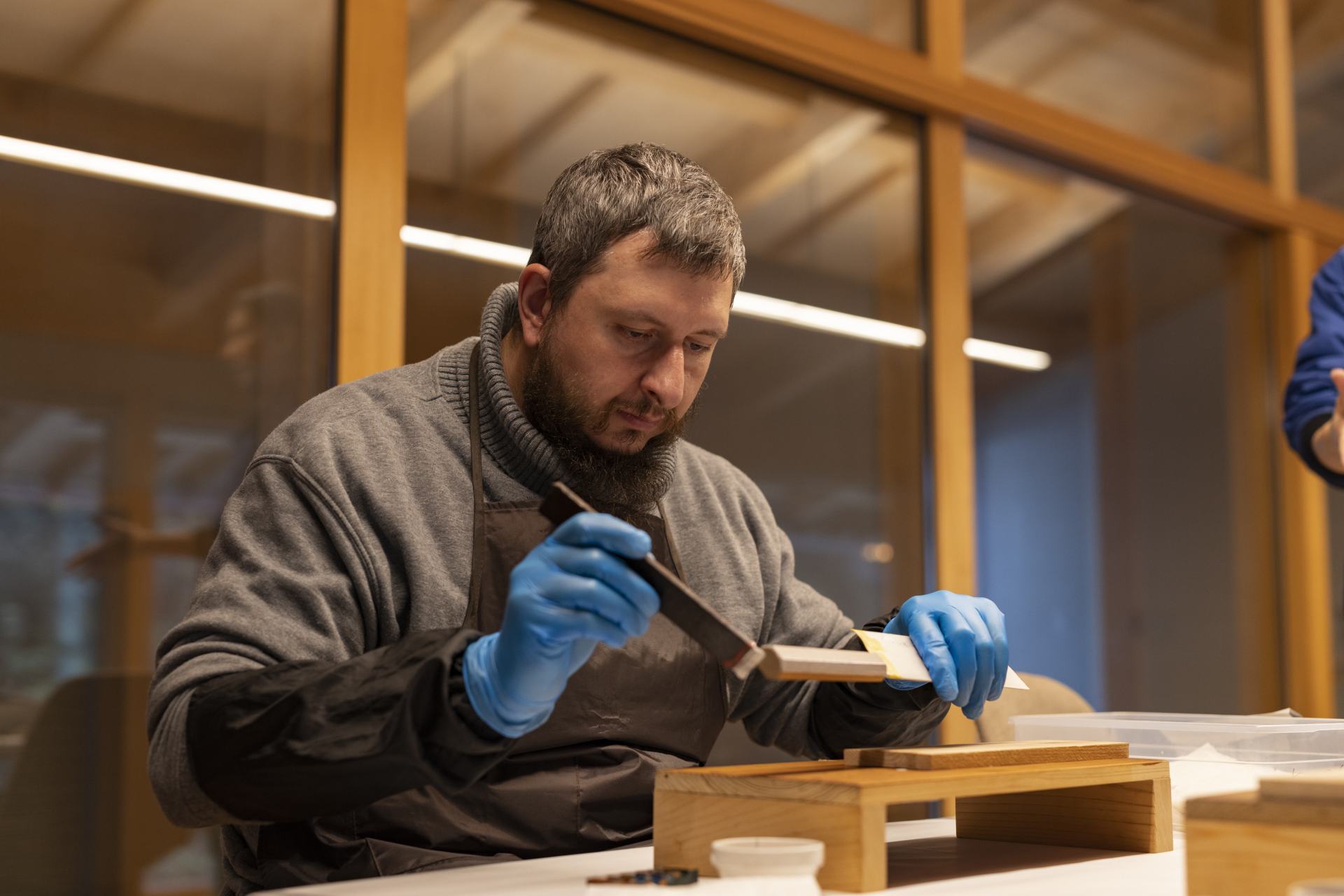
A 2-day journey to learn about regional bamboo crafts in Kyoto's Otokuni district, and traditional crafts such as Echizen hammered blades in Fukui (Kyoto - Fukui)
Last update
The best way to learn is by doing, so whether you’re visiting Japan for the first time or are a seasoned traveler, be on the lookout for experiences that give you a taste of authentic Japanese culture. By trying your hand at traditional Japanese crafts, participating in modern sustainability initiatives, or enjoying regional culinary adventures in off-the-beaten-track locations, you can discover a side of Japan that many people overlook. We recently spent two days traveling through Kyoto, Fukui, and Shiga prefectures to curate a travel odyssey that goes beyond the usual tourist trails. We hope it inspires you to embark on the Japanese adventure of a lifetime.
Shop & Gallery Chikubuen (Nagaokakyo, Kyoto Prefecture)
We began our immersive journey at Shop & Gallery Chikubuen, nestled in Nagaokakyo, just a short drive from Kyoto. This unique shop, gallery, and workshop is a haven for all things bamboo. Their showroom is adorned with cups, vases, and tea ceremony utensils crafted from ecologically harvested bamboo from Chikubuen’s own grove. The “imperfections,” such as holes burrowed by ants, add a touch of natural charm to each piece. We learned a lot during a tour of the facility, like how bamboo forests are essentially magical places where groves die and regenerate naturally every 110-120 years.
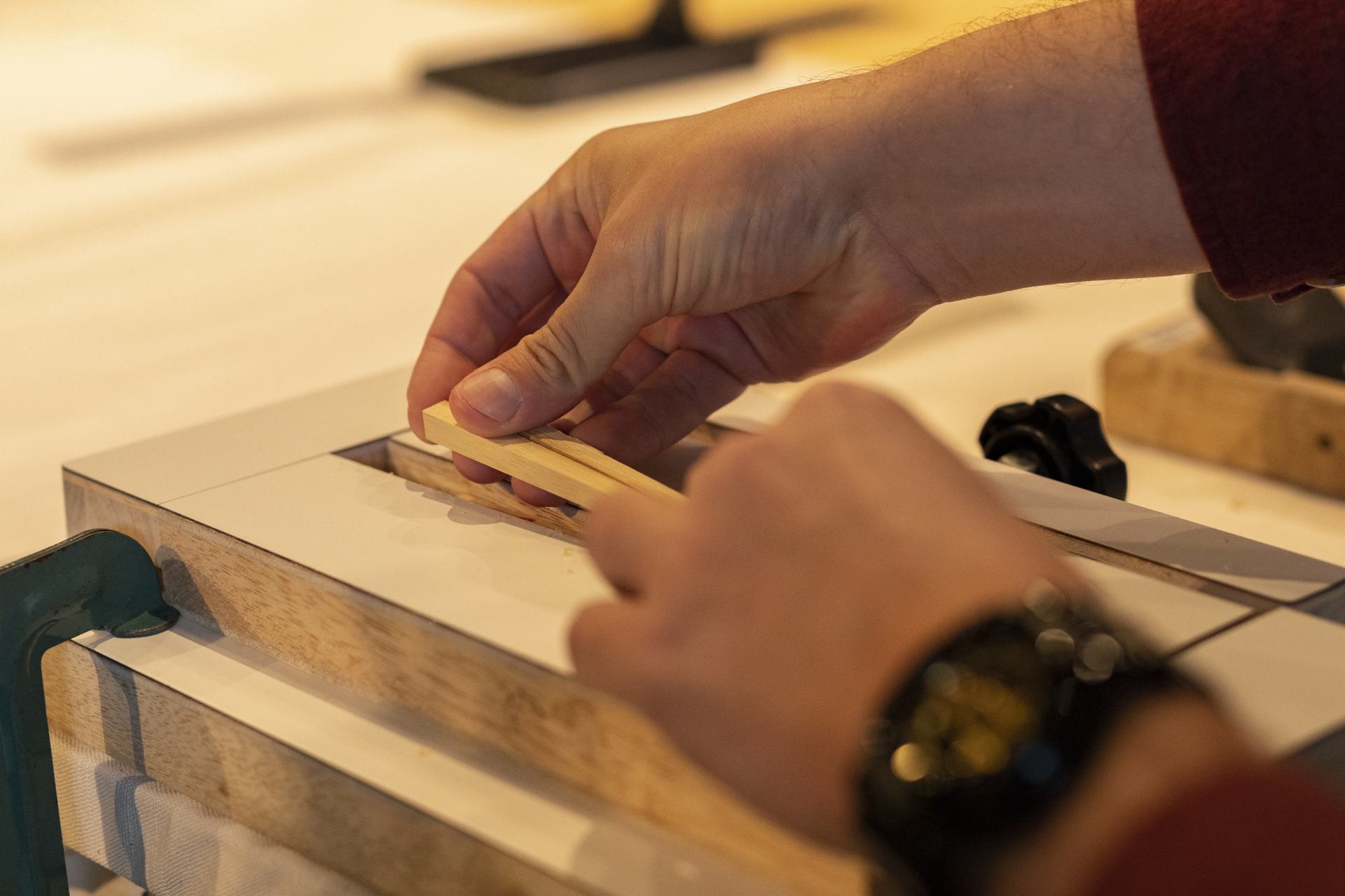
Raw bamboo chopsticks are prepared for shaping.
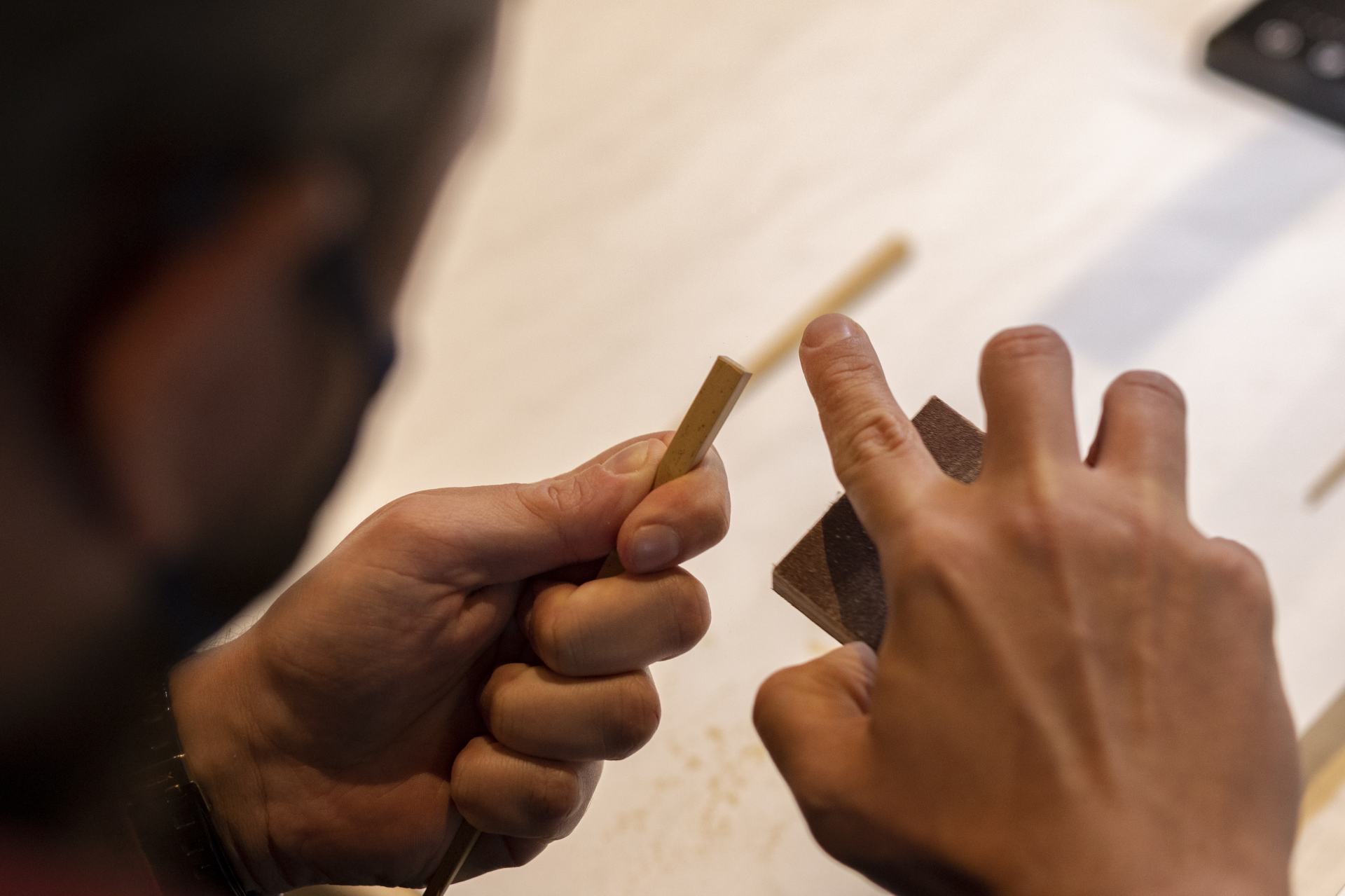
Adding the final touches.
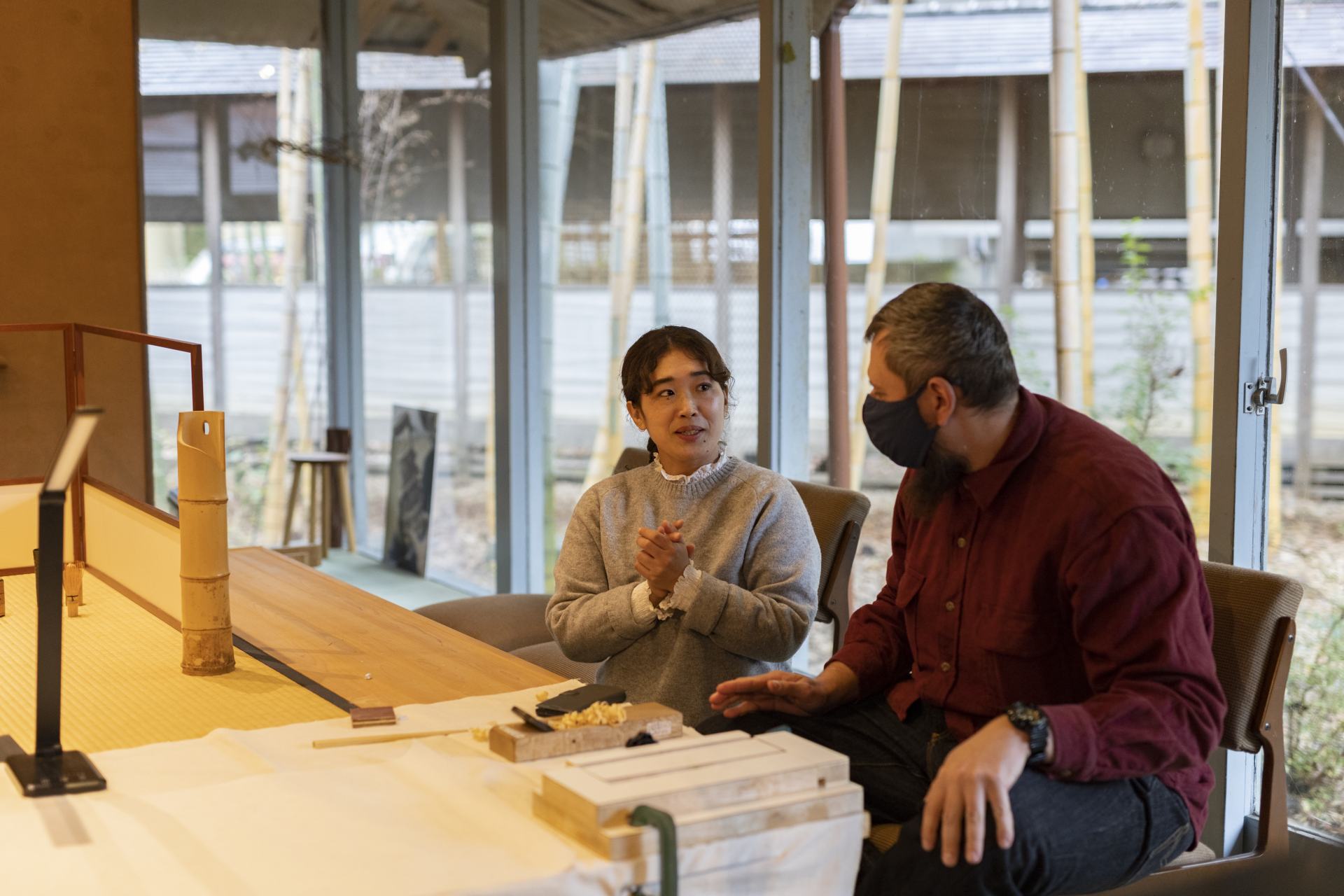
Chikubuen staff talks about the unique qualities of bamboo.
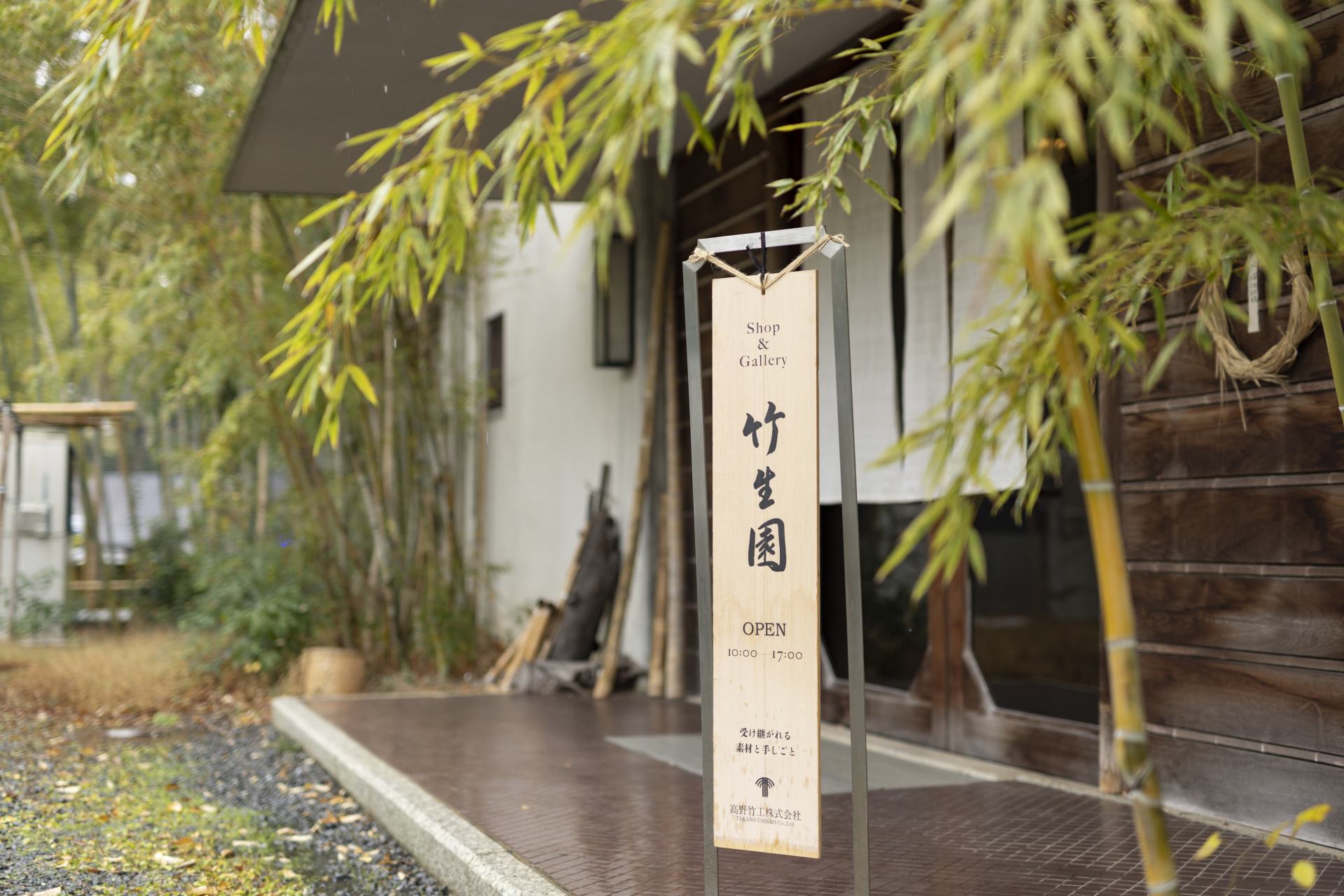
Shop & Gallery Chikubuen.
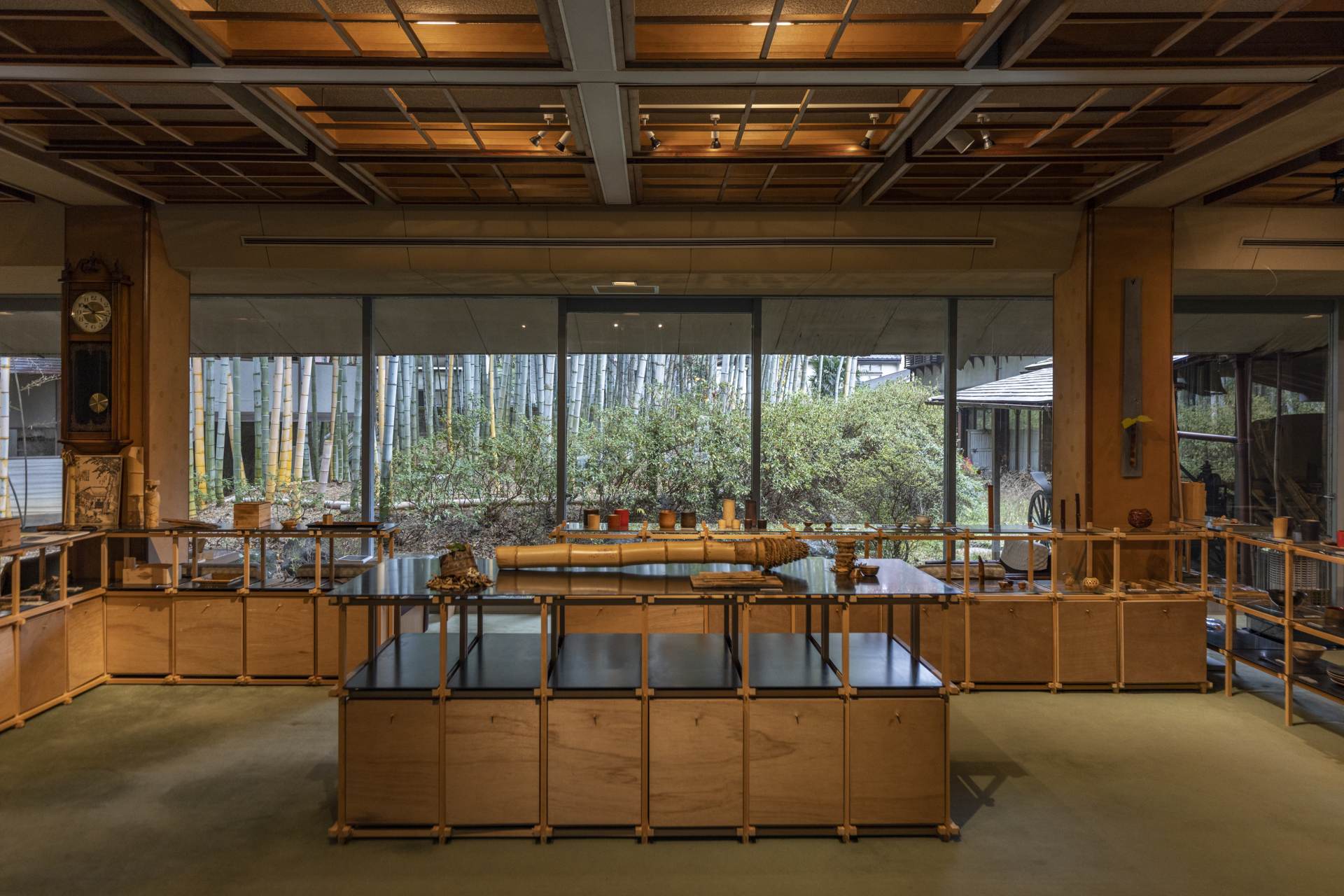
The interior of Chikubuen emanates the natural warmth of bamboo wood.
This tidbit of information made us appreciate the bamboo chopsticks we were about to make even more. The rough utensils are prepared in advance. Using a traditional plane, we smoothed out their surface except for the side featuring the outer layer of bamboo with distinctive markings. We then used sandpaper to give them a better grip and round out the tips. Finally, we sanded small accents into the top part of the chopsticks, each person adding their own personal accents to create the perfect one-of-a-kind souvenir of our time in Nagaokakyo.
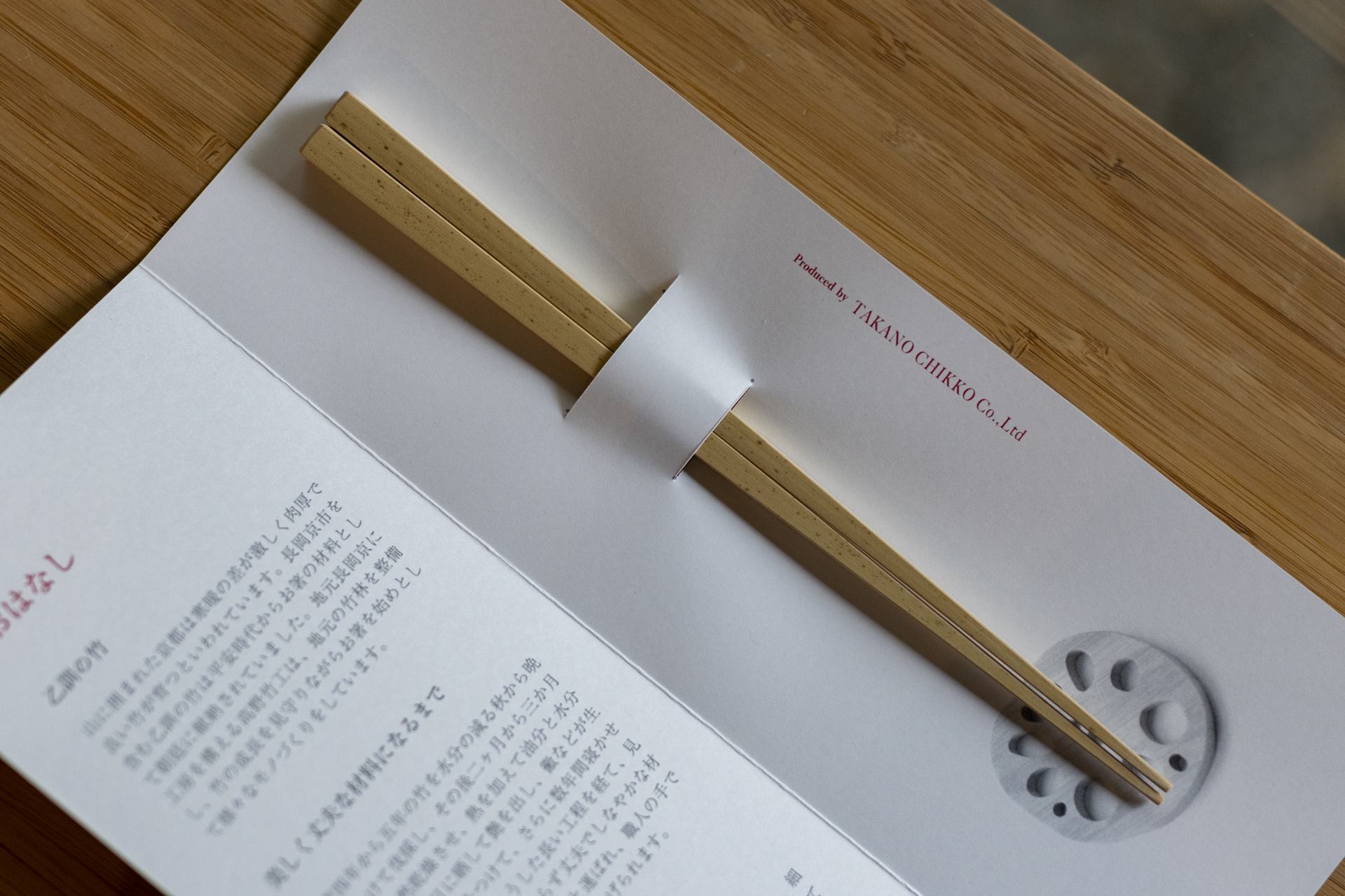
A pair of hand-planed bamboo chopsticks makes for a one-of-a-kind Kyoto souvenir.
Kinsuitei (Nagaokakyo, Kyoto Prefecture)
Chikubuen is actually part of Kinsuitei, a traditional Japanese restaurant established in 1881. Here we enjoyed lunch in a gazebo built in the sukiya-zukuri style inspired by tea ceremony rooms. But we were not leaving the world of bamboo just yet as Kinsuitei specializes in takenoko (bamboo shoots) dishes, served in a layered lunch box also filled with rice, shrimp, rolled omelets, vegetables, kamaboko fish cakes, and more, with traditional Kyoto tsukemono pickles on the side.
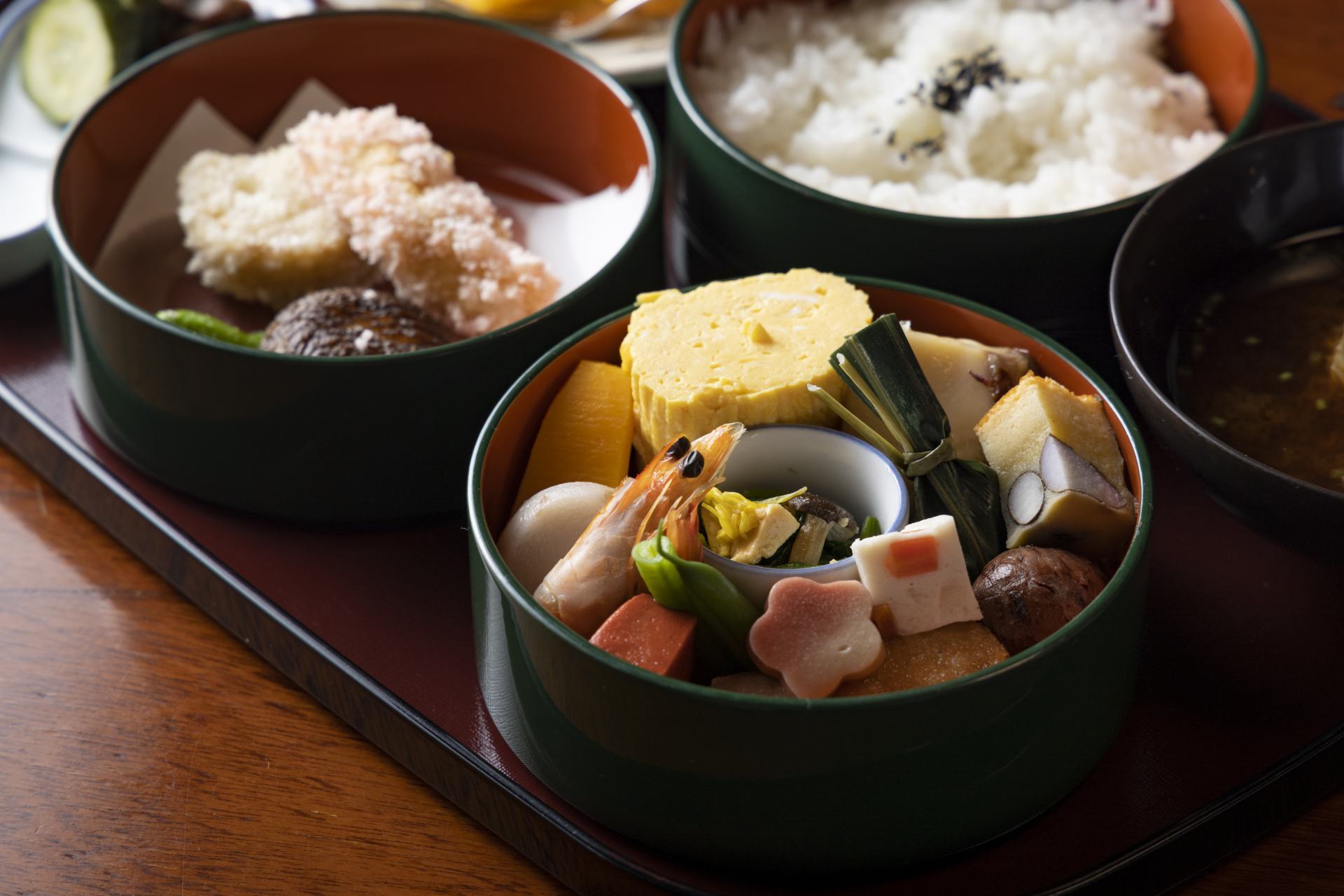
Bamboo shoots are the stars of this traditional Kyoto feast.
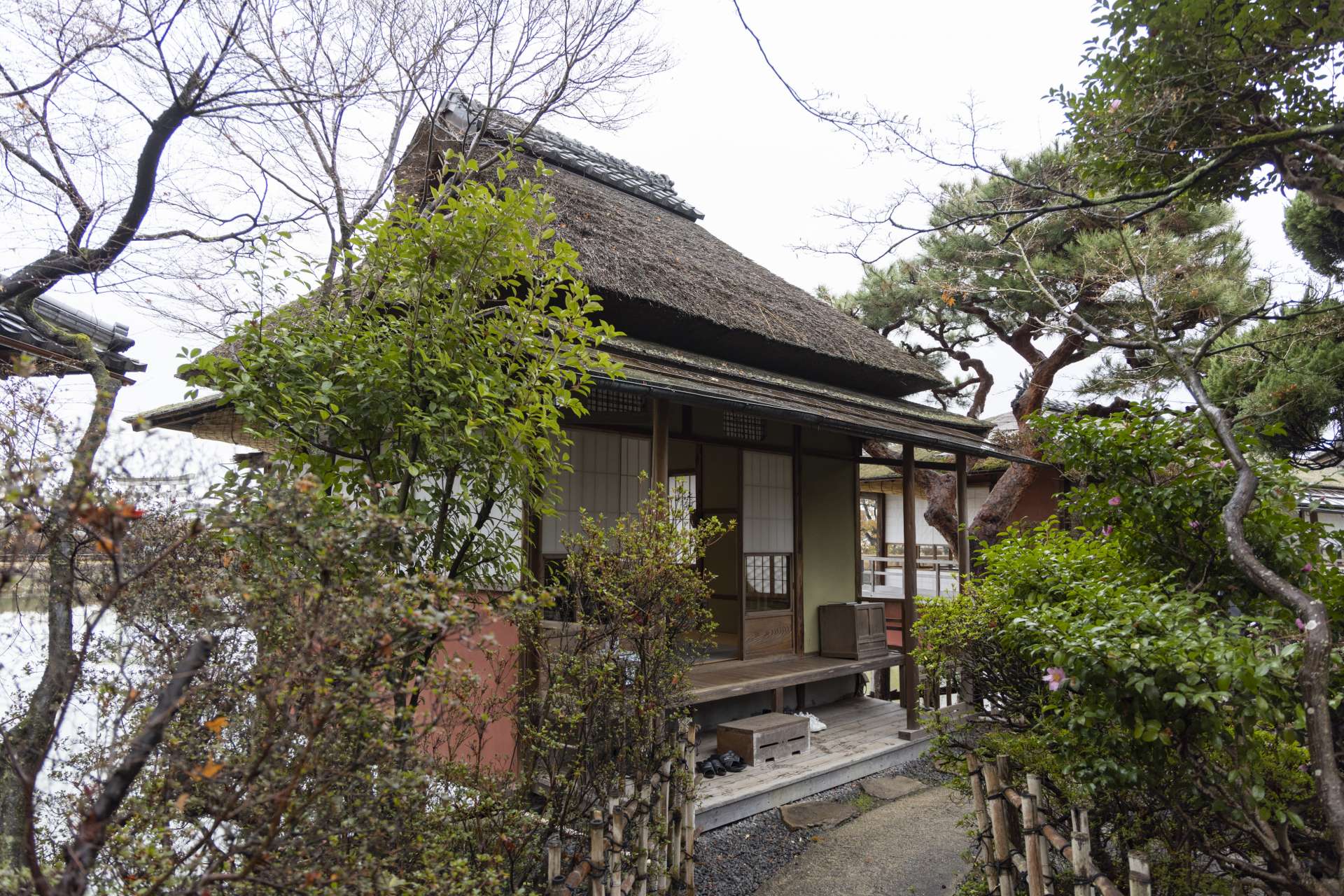
Kinsuitei’s dining rooms transport guests to a world of nature and traditional Japanese culture.
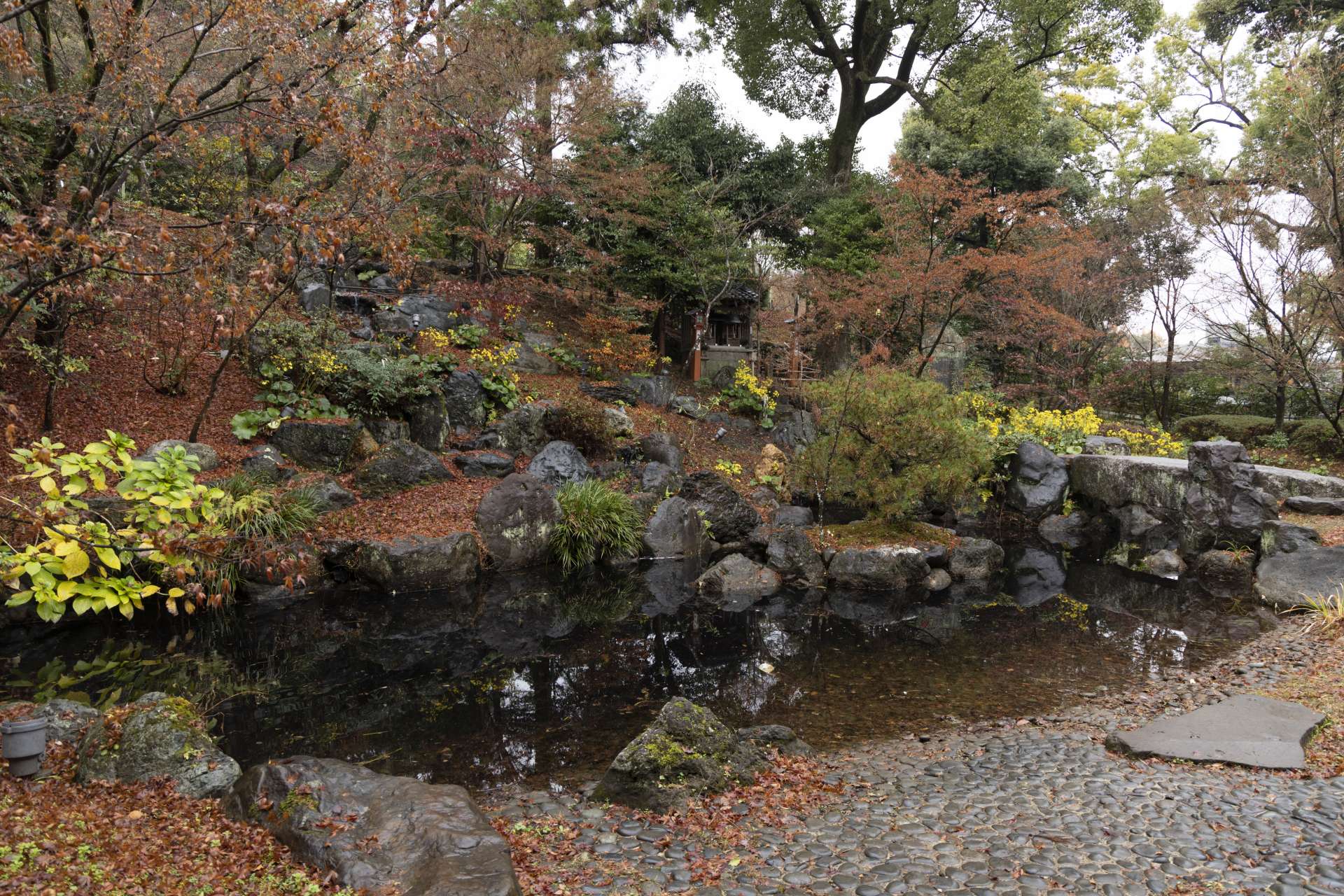
Even in winter, Japan’s former capital is full of color.
Our lunch was complemented by breathtaking views of Hachijogaike Pond and the surrounding Nagaoka Tenmangu Shrine, known as the “hard to leave” shrine dedicated to the scholar and poet Sugawara no Michizane (845 – 903). Even outside of springtime, when plum blossoms, cherry blossoms, and red azaleas are said to magically reflect on the surface of the pond, we found ourselves in a mesmerizing world of color and traditional architecture that made us feel as if we’d been transported to quintessential Kyoto for our enjoyment.
Take-no-Michi,Kyoto City Rakusai Bamboo Park(Kyoto, Kyoto Prefecture)
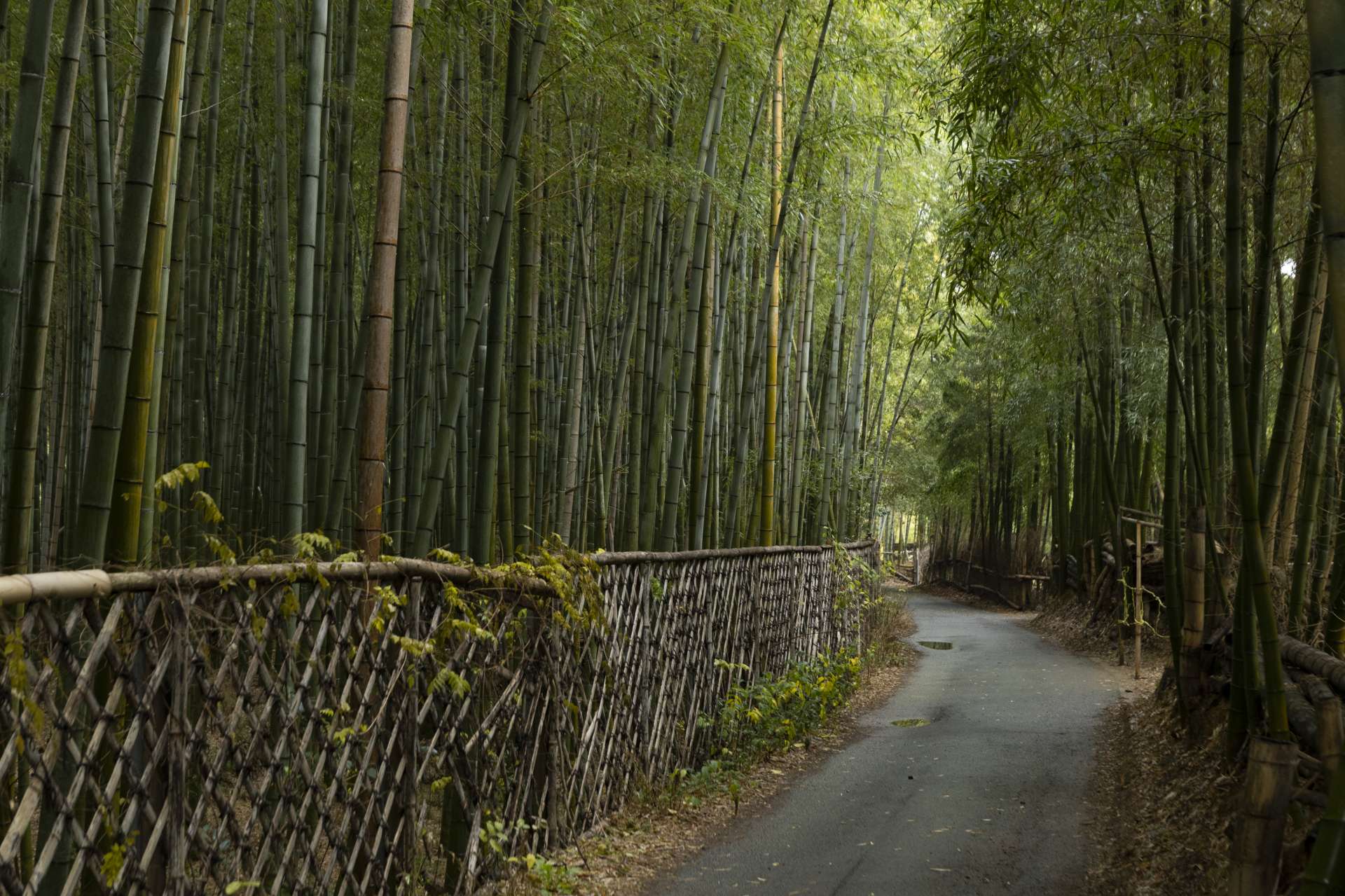
The Take no Michi bamboo road is Kyoto’s enchanting, local secret.
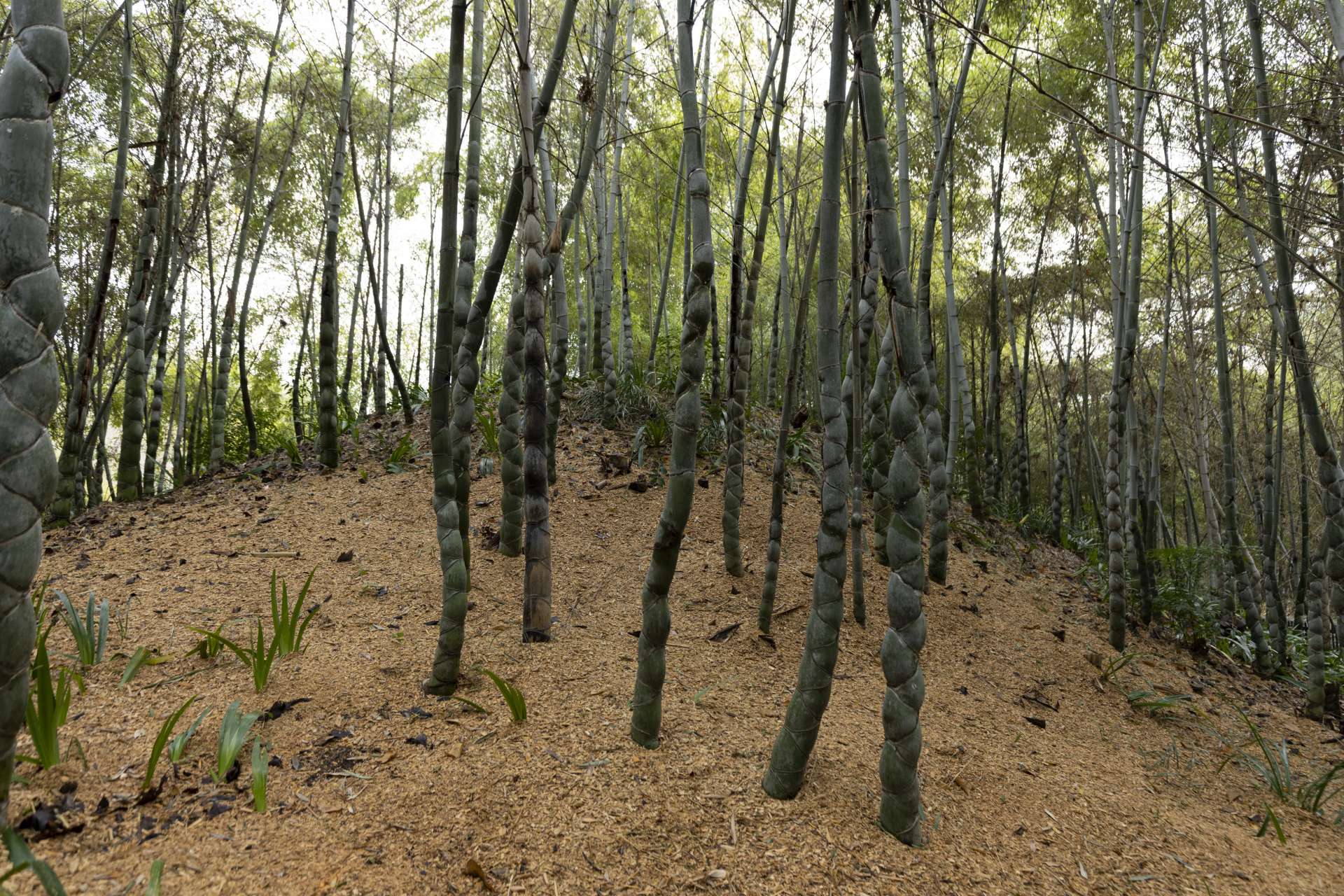
Kikkochiku “tortoise-shell” bamboo transports visitors to another world.
At this point, we decided to continue the bamboo theme of our trip by visiting the Otokuni Bamboo Grove, a hidden gem often ignored by travelers. When it comes to Kyoto’s bamboo forests, everyone tends to head for Arashiyama, but the Take no Michi bamboo road, which stretches for 1.8 kilometers between pristine bamboo fenced off by handmade barriers in eight different styles representing Kyoto’s rich regional cultures, is well worth a visit.
Strolling through the rolling bamboo hills (while contemplating the area’s suitability for e-bike rides), it was easy to envision that this locale might have been the birthplace of one of Japan’s oldest folk tales, The Tale of the Bamboo Cutter. The enchanting atmosphere seemed the perfect spot to immerse oneself in fantastical tales of dragon jewels and moon princesses, especially when encountering otherworldly bamboo varieties such as the intricately braided kikkochiku “tortoise-shell” variety (historically found only in Kyoto) or the colorful kinmei-moso golden cultivar adorned with a striking green stripe found in the adjacent Kyoto City Rakusai Bamboo Park.
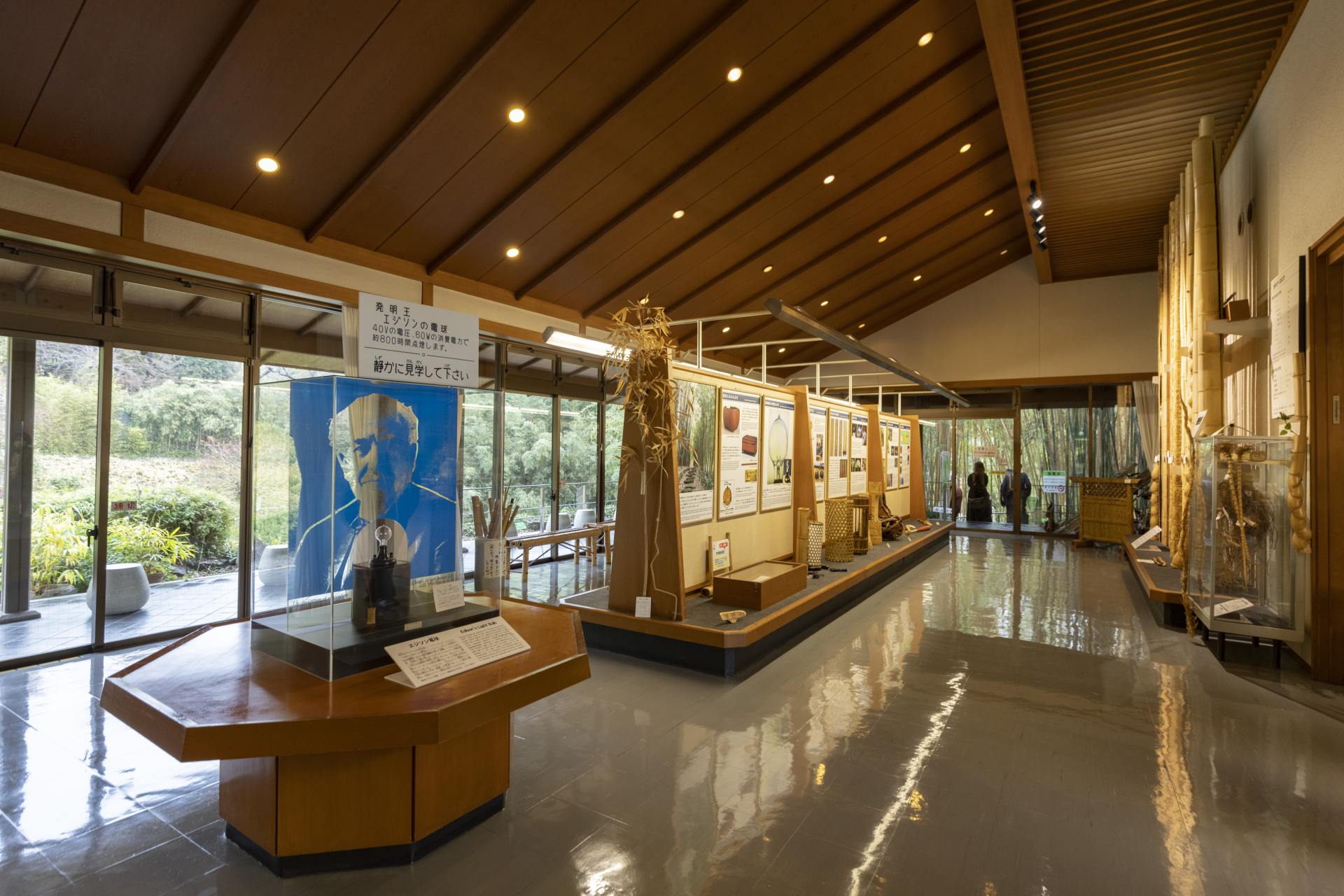
The Rakusai Bamboo Park’s museum is dedicated to the rich history and variety of bamboo.
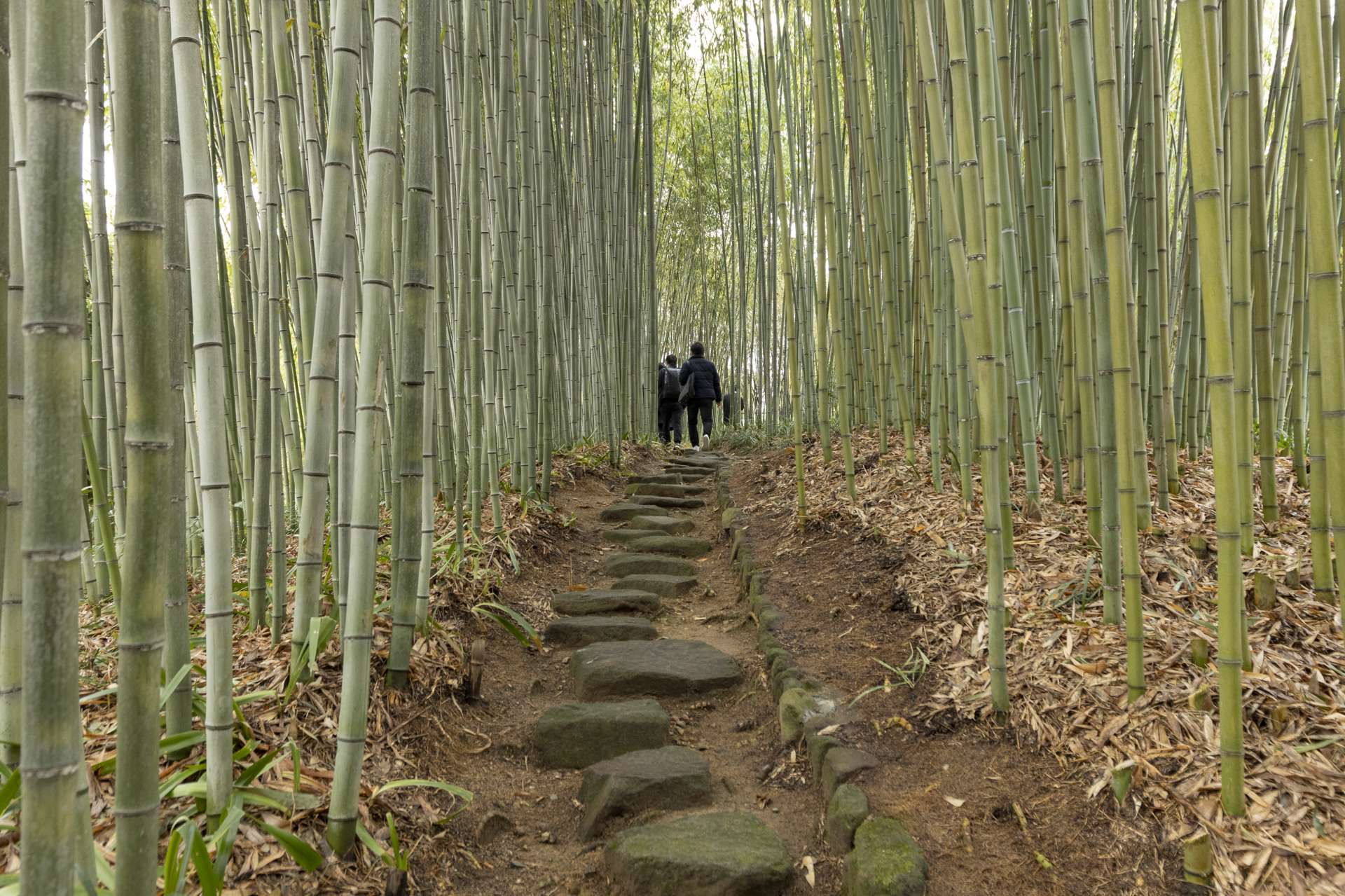
A stroll through the Kyoto City Rakusai Bamboo Park.
Sea-auberge shitsumi (Obama, Fukui Prefecture)
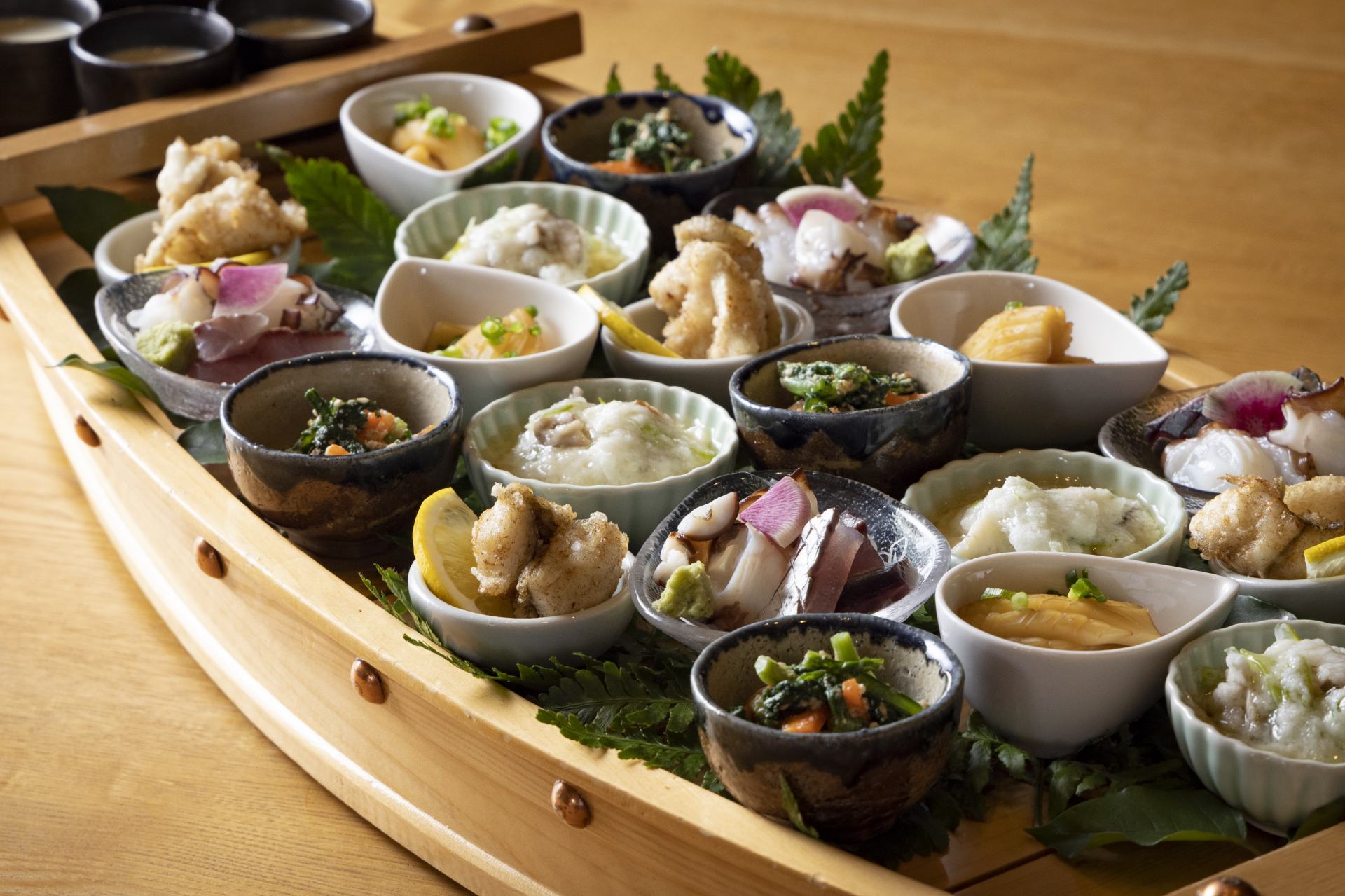
From the bounty of the land to the bounty of the sea: entrees at sea-auberge shitsumi make a bold statement at the start of dinner.
Later in the day, we made our way to Fukui Prefecture, specifically to the city of Obama, whose name, which translates to “little beach,” never fails to bring a smile to the faces of foreign travelers. Our chosen accommodation was sea-auberge shitsumi, which overlooks Wakasa Bay. This place serves as a source of fresh ingredients for the inn’s cuisine, earning it a well-deserved spot in the special edition of the Michelin Guide Hokuriku 2021. That evening, we celebrated with a delicious seafood feast, featuring an array of culinary delights, including octopus sashimi, boiled squid, flathead flounder tempura, smoked amberjack, sautéed mackerel, and char-grilled sevenband grouper.
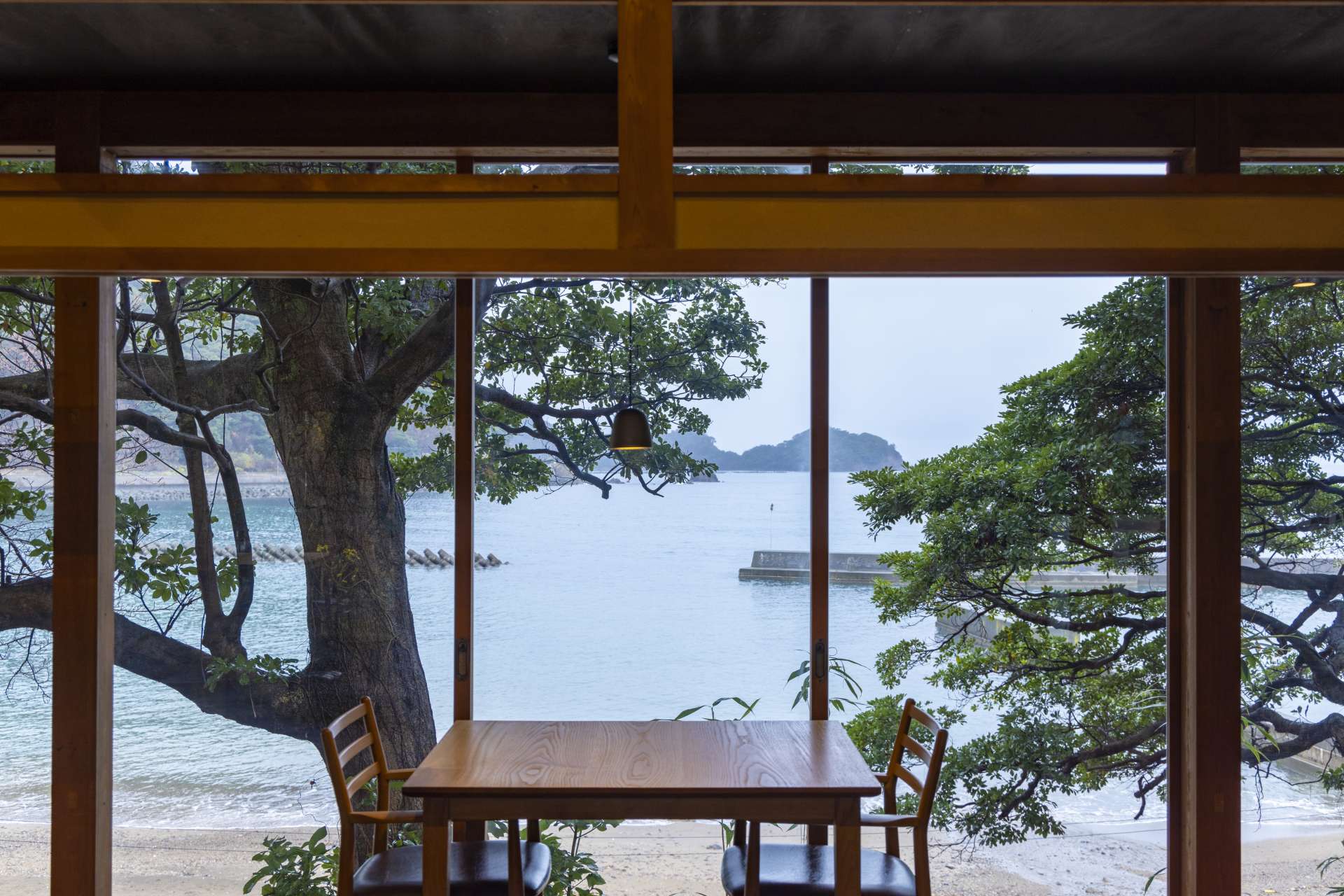
Dining with a view at sea-auberge shitsumi.
Ryusen Hamono(Echizen, Fukui Prefecture)
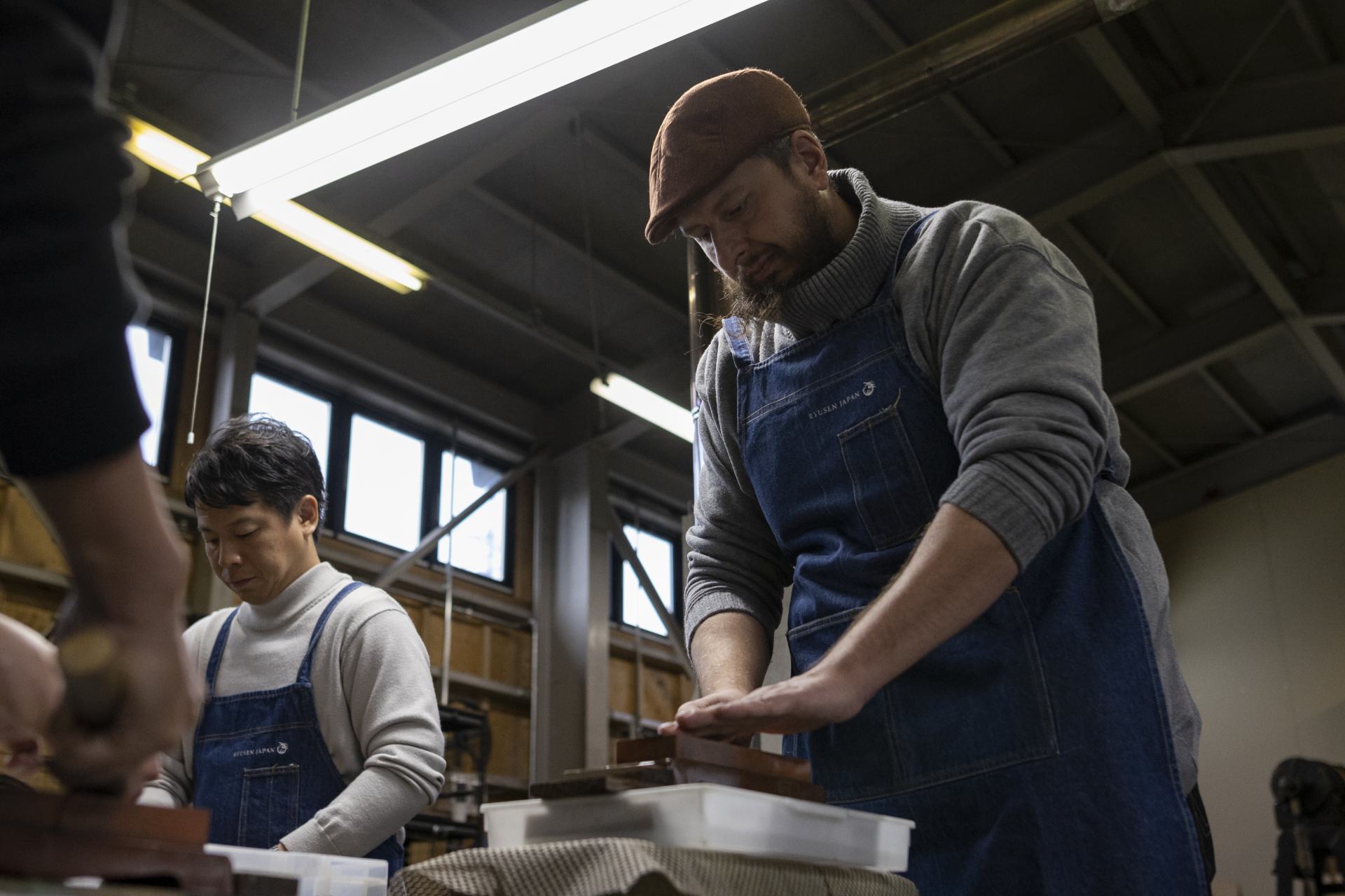
Sharpening our very own Echizen Uchihamono forged knives.
Our next destination in Fukui was Echizen, where we delved into the ancient craft of Echizen Uchihamono forged knives, with a history dating back to around 1337. In 1979, this art was designated as a traditional Japanese craft, making it the first bladesmithing art to receive such an honor. At Ryusen Hamono, a renowned producer of various types of Echizen handmade knives, we were greeted by third-generation proprietor Koji Masutani.
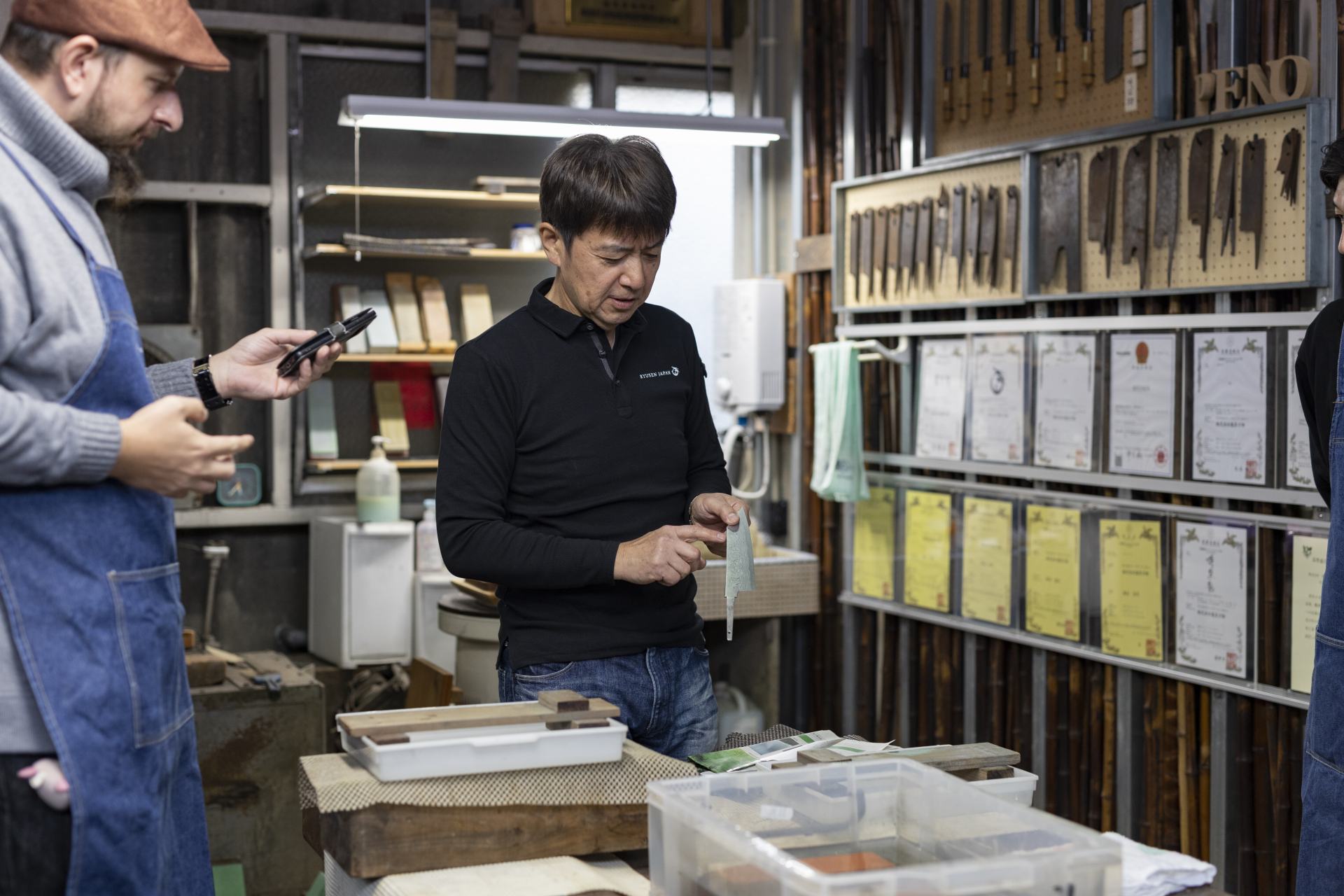
Koji Masutani explains the finer points of Echizen knife-sharpening.
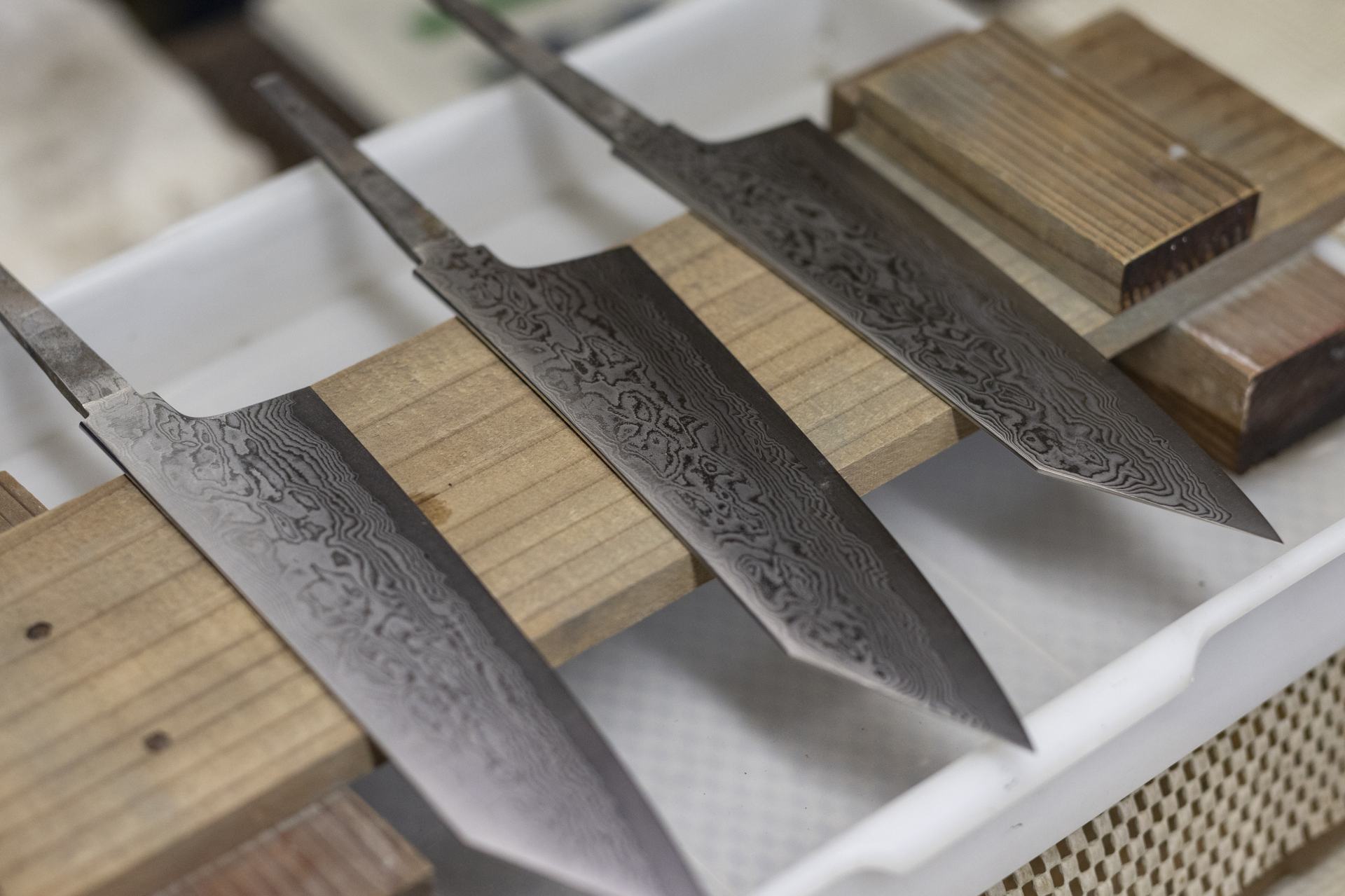
Echizen Uchihamono forged knives: a fusion of art and utility.
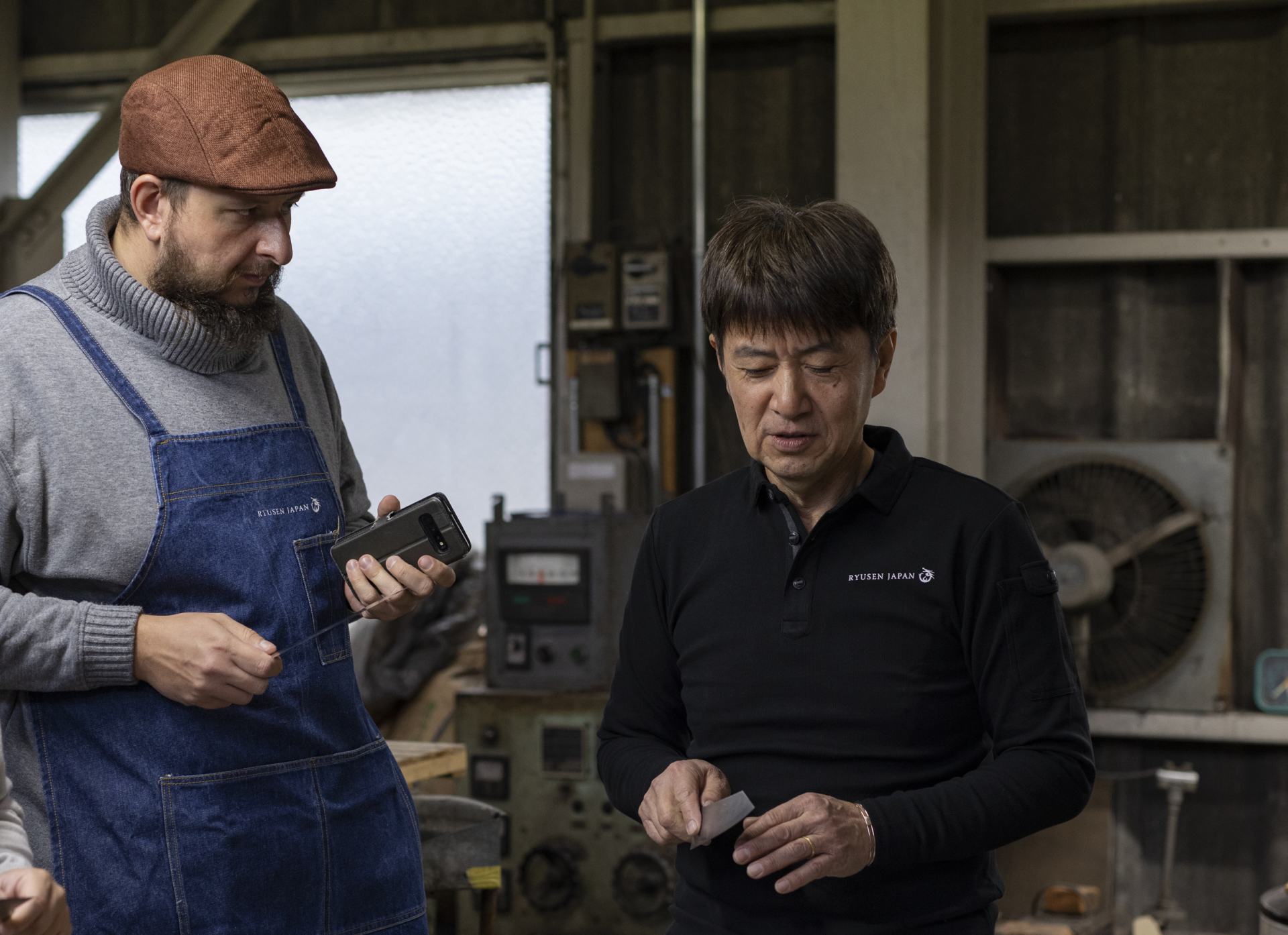
Waiting for Master Masutani to inspect our sharpened knives.
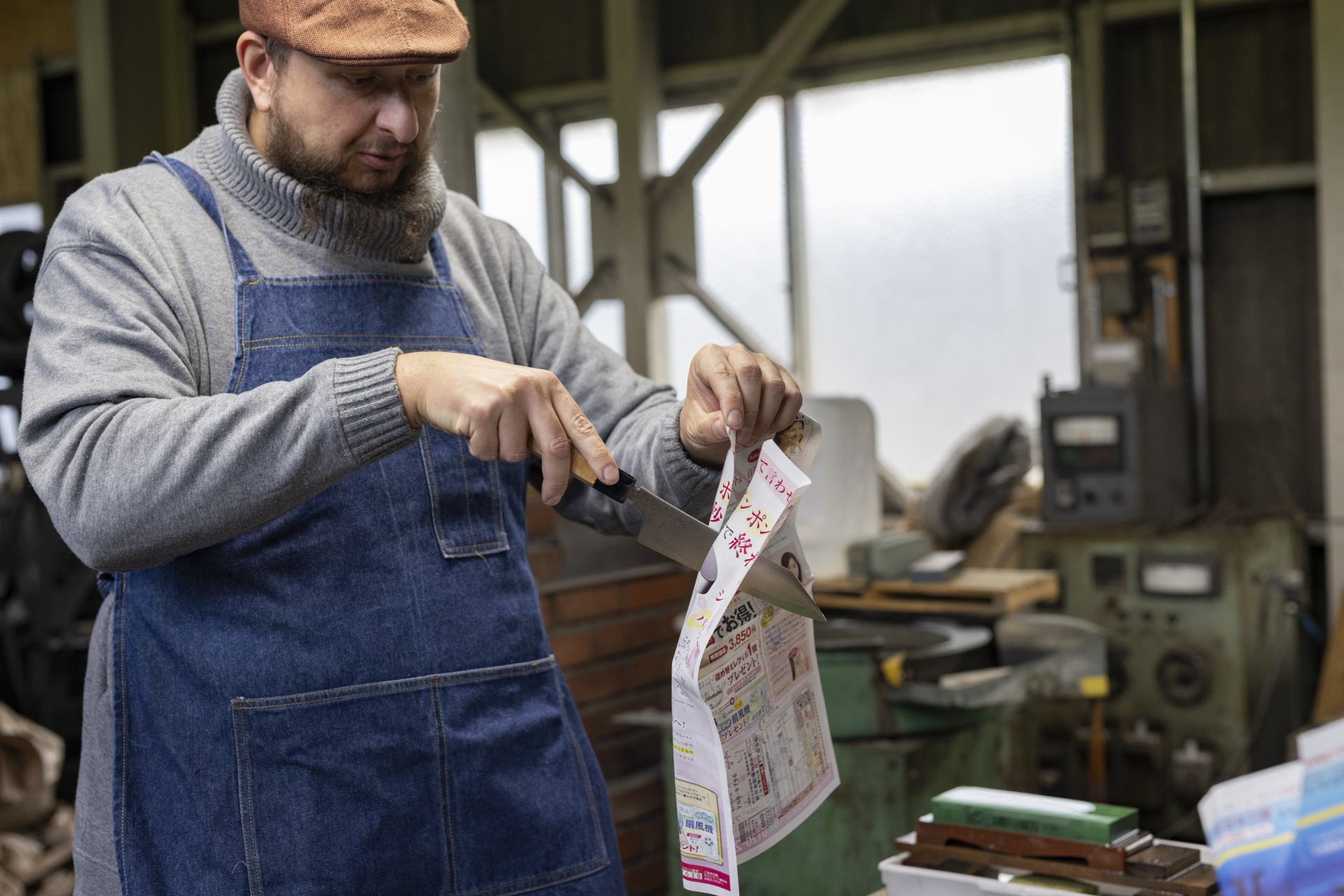
Echizen Uchihamono forged knives are well-known for their unparalleled sharpness.
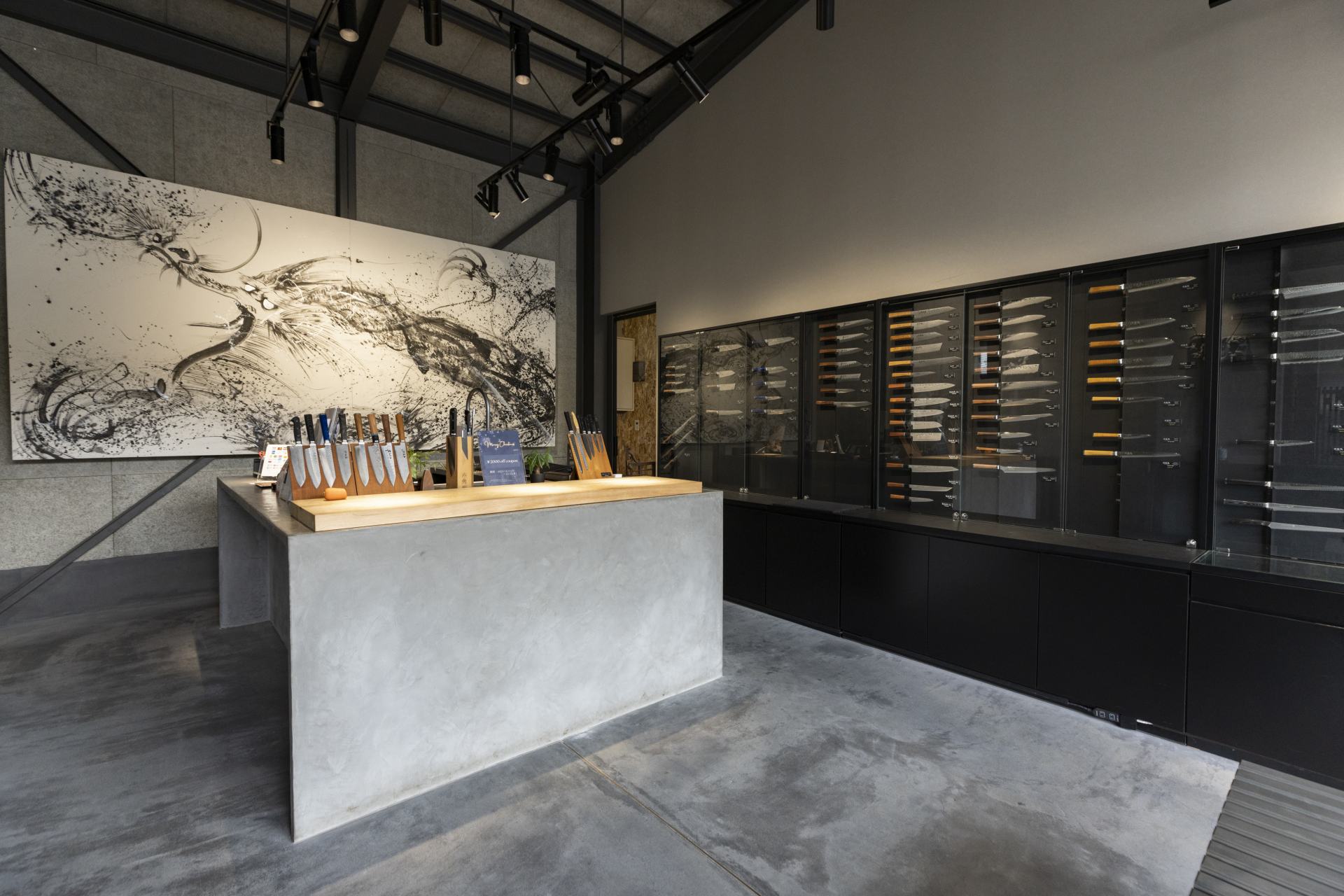
The wide selection of knives and the dragon ink painting leave an impression on visitors as soon as they enter the Ryusen studio.
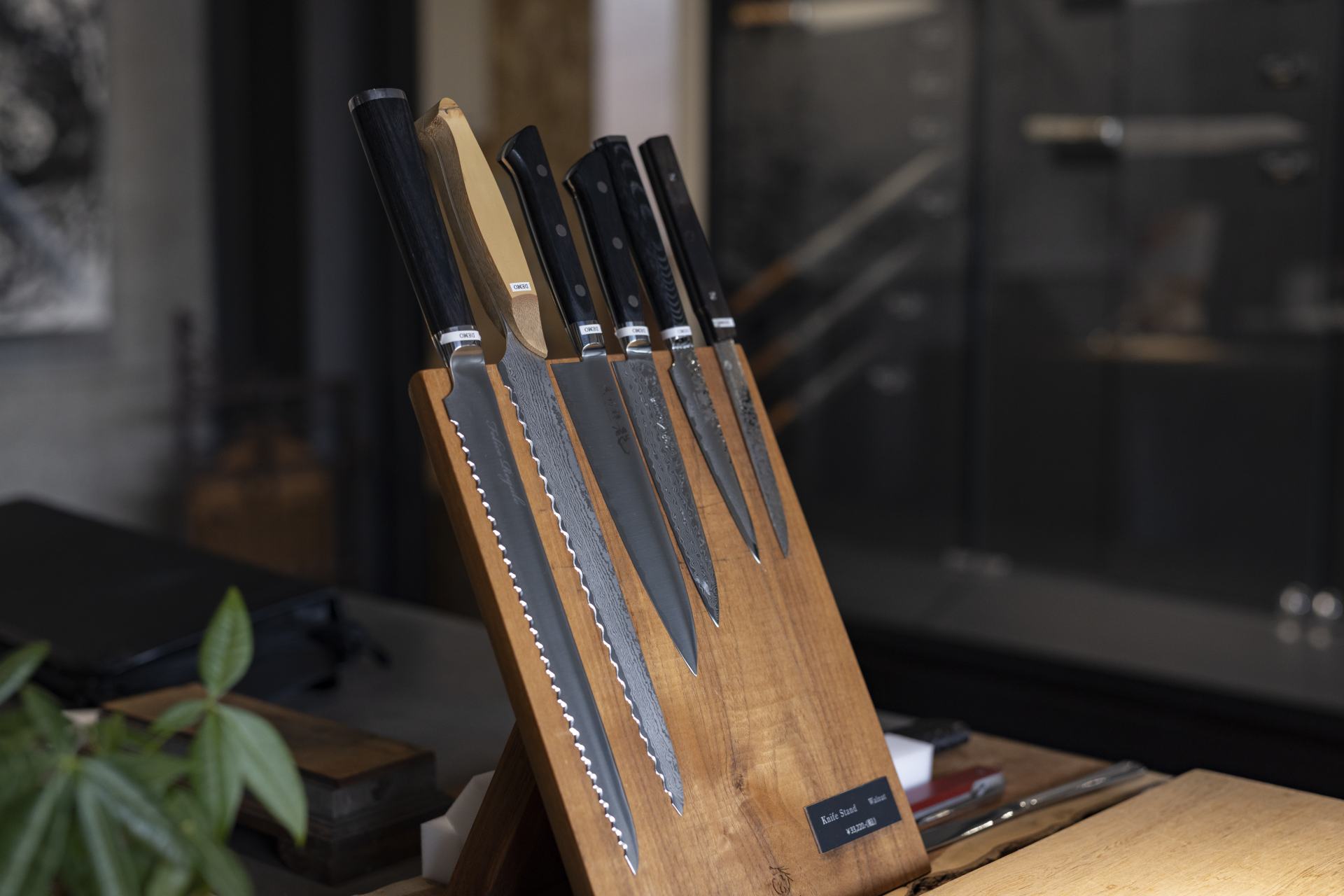
Ryusen makes all kinds of knives.
Here he walked us through the meticulous process of knifemaking, starting with rippled sheets of steel sandwiched between iron, which we sharpened on whetstones. The tip was the trickiest part, but with persistence we achieved the desired sharpness.
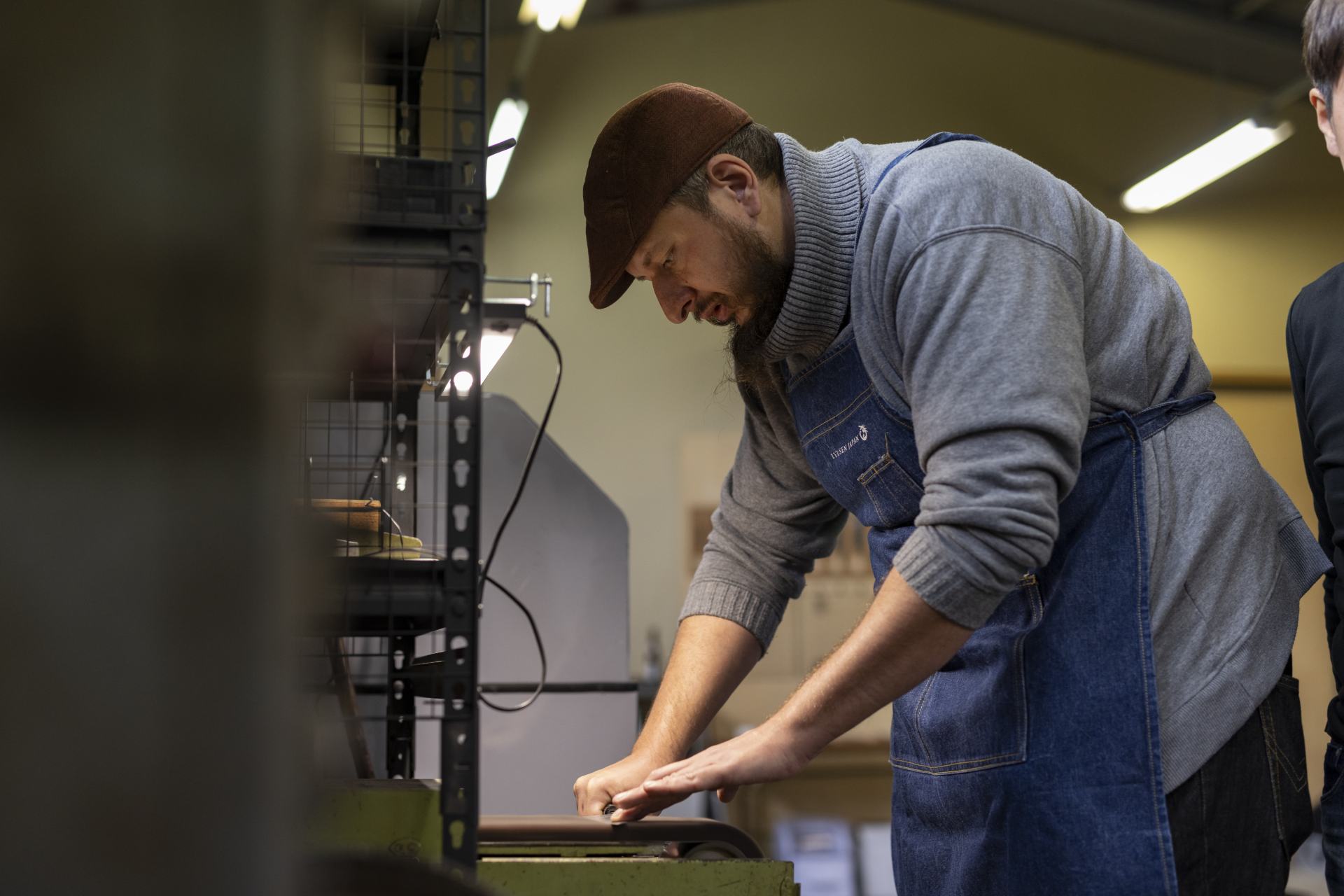
Polishing an Echizen Uchihamono forged knife.
Etoe (Echizen, Fukui Prefecture)
After some hand polishing, all that the knives needed were their handles. For that, we headed to the neighboring Etoe, a lacquered handle maker that recently partnered up with Ryusen. Etoe exuded a gentle warmth from its wooden interior, a testament to the labor-intensive craftsmanship that goes on behind the scenes.
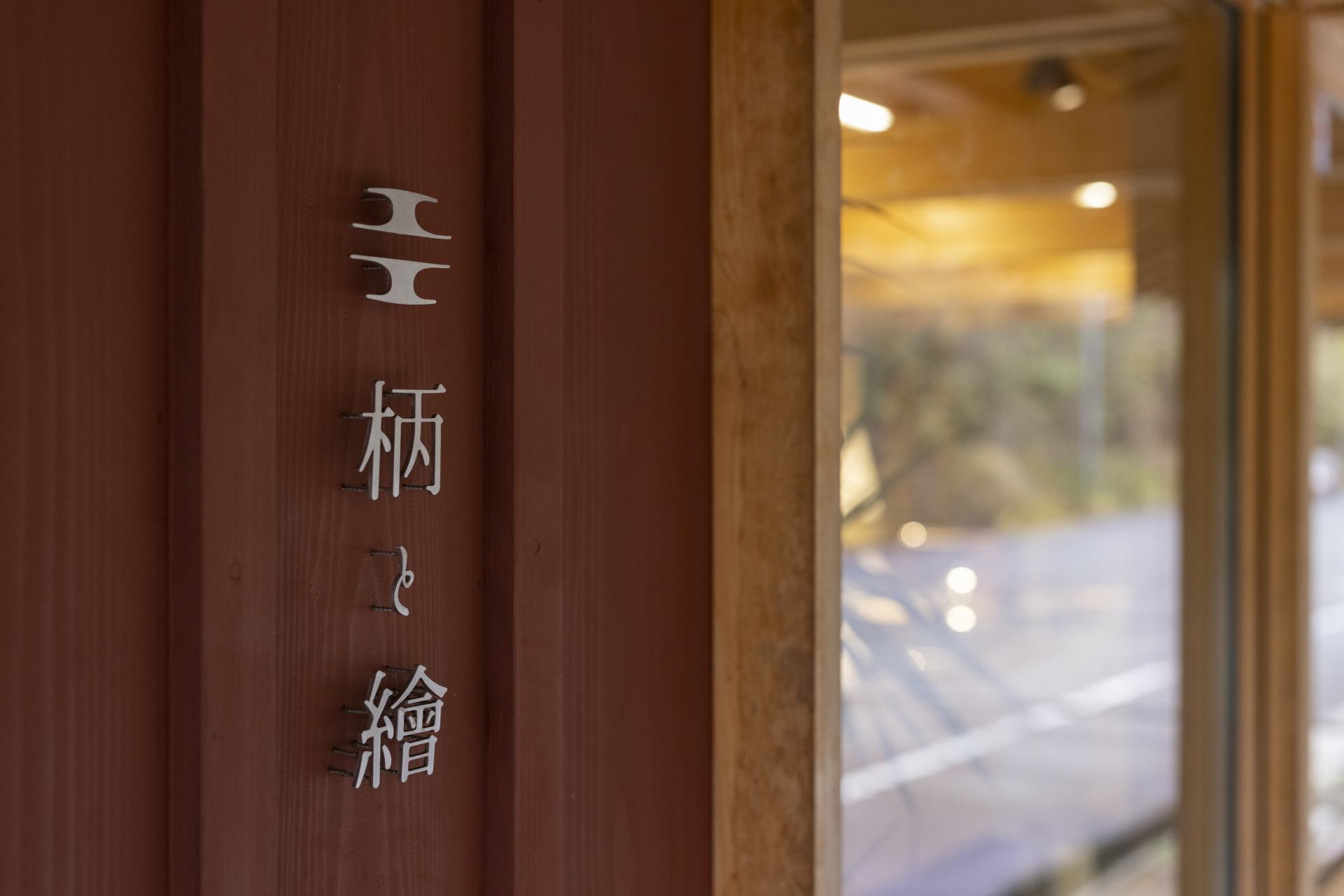
Entrance to etoe inviting visitors to an enchanting world of wood.
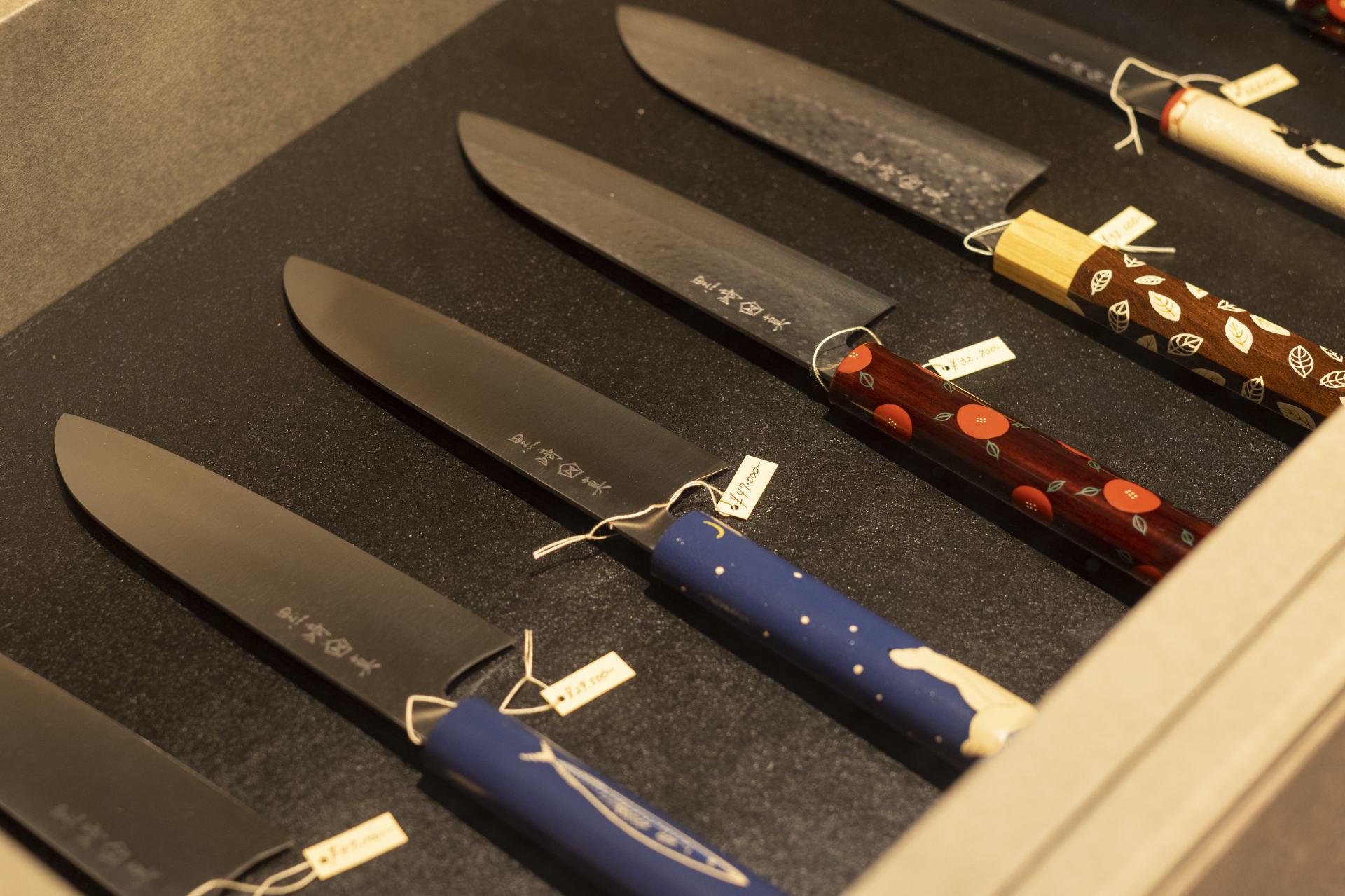
etoe handles range from simple and classic to colorful and whimsical.
Little did we know that crafting knife handles could be so complicated, with considerations such as avoiding blade slits in hard wood to prevent cracking. The process involved attaching a softer wood variety, carving it, and encasing it all in another layer of wood. It’s an impressively complex process, one ill-suited for amateurs. Recognizing the complexity, we opted for premade handles which the etoe staff attached expertly to our blades.
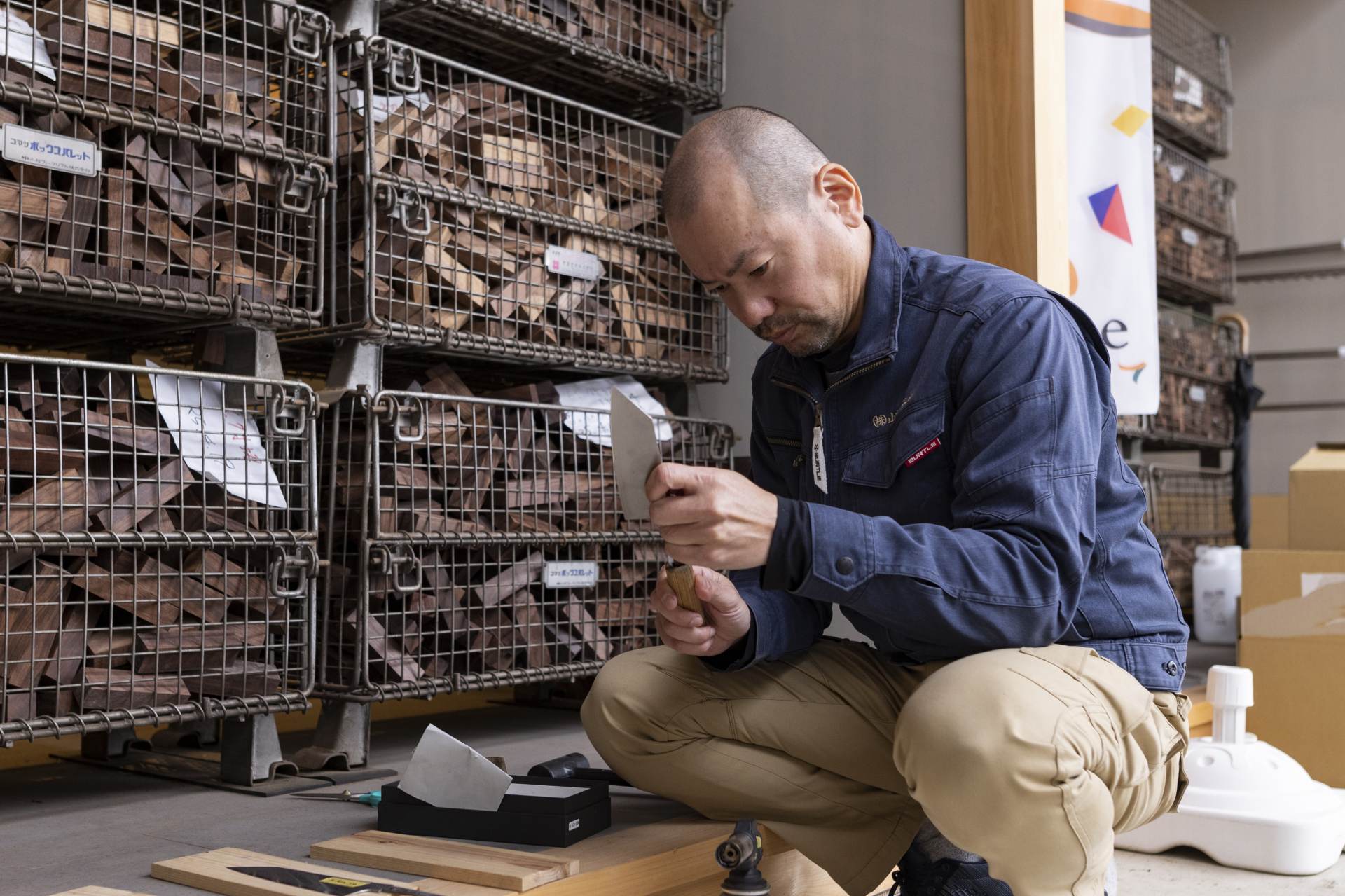
Echizen knife being expertly attached to an etoe handle.
The next step involved lacquering the handles in the upstairs space where we had enjoyed a catered lunch earlier in the day. The lacquering process proved to be a lot of fun. The colors of the varnish are hypnotically vivid, and are applied to the wood using brushes made of human hair. Once finished, the knife is handed off to the etoe staff for the final touches, ensuring a seamless finish to the handmade knives, which will be mailed to you. All that will be left to do is decide what to use your newly made blade on first.
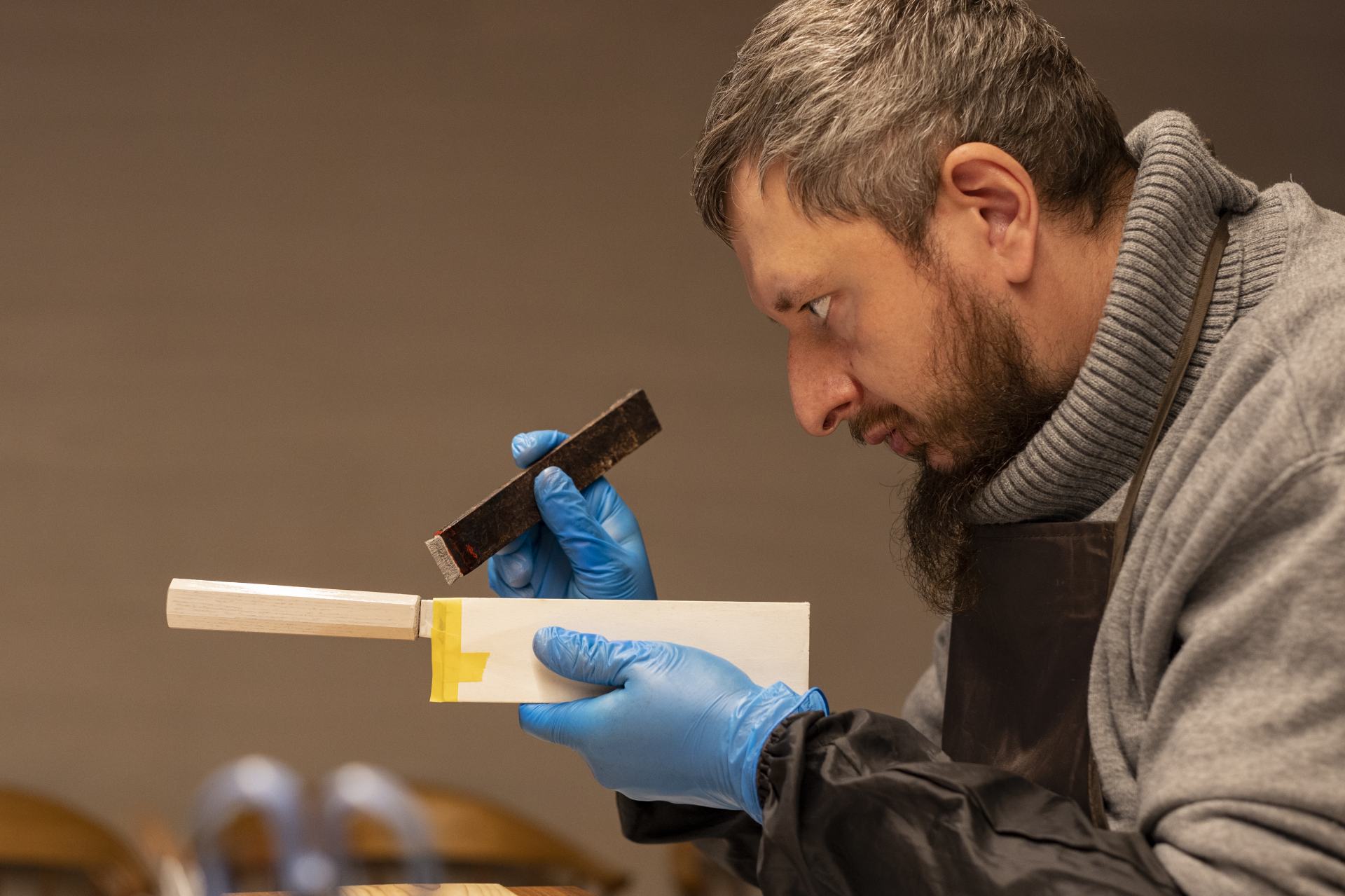
Lacquering the wooden handles with a brush made from human hair.
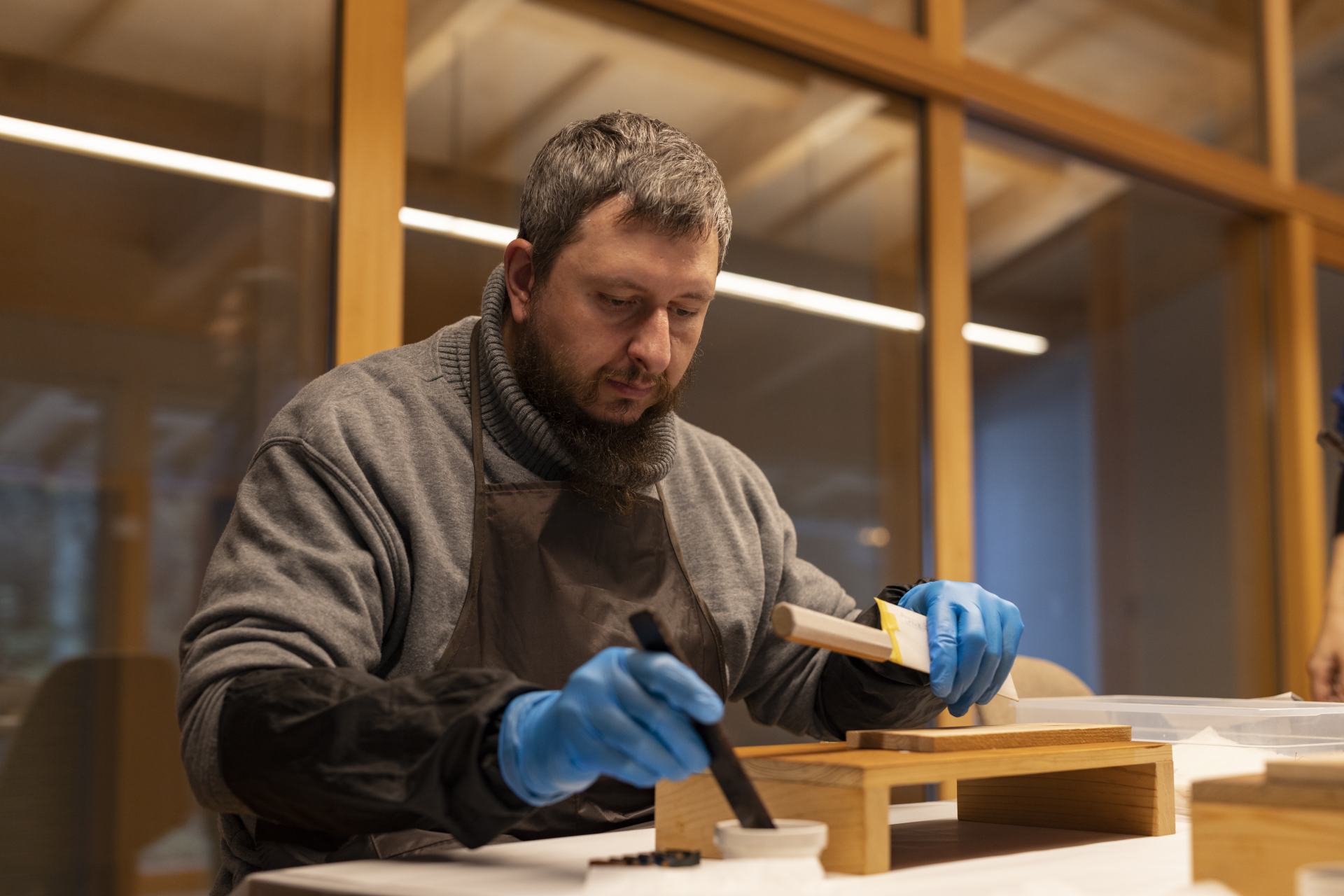
Lacquering is a simple process that requires the utmost concentration.
La Collina Omihachiman (Omihachiman, Shiga Prefecture)
Omihachiman, situated in Shiga Prefecture, is renowned for its historic townscapes evoking an atmosphere of the Edo period (1603-1868). The city boasts a picturesque canal that connects to Lake Biwa, Japan’s largest freshwater lake, and the Himurehachimangu Shrine, which dates back to the year 131 and worships the god of archery and war. Amidst these popular attractions lies a lesser-known but fascinating gem: La Collina Omihachiman, the flagship store of Taneya, a celebrated Japanese confectioner with local roots. More than just a place to buy sweets, La Collina pays homage to Shiga’s natural beauty through a sprawling complex of grass-covered buildings reminiscent of a scene from a Ghibli movie.

The harmony of nature and human architecture at La Collina Omihachiman.
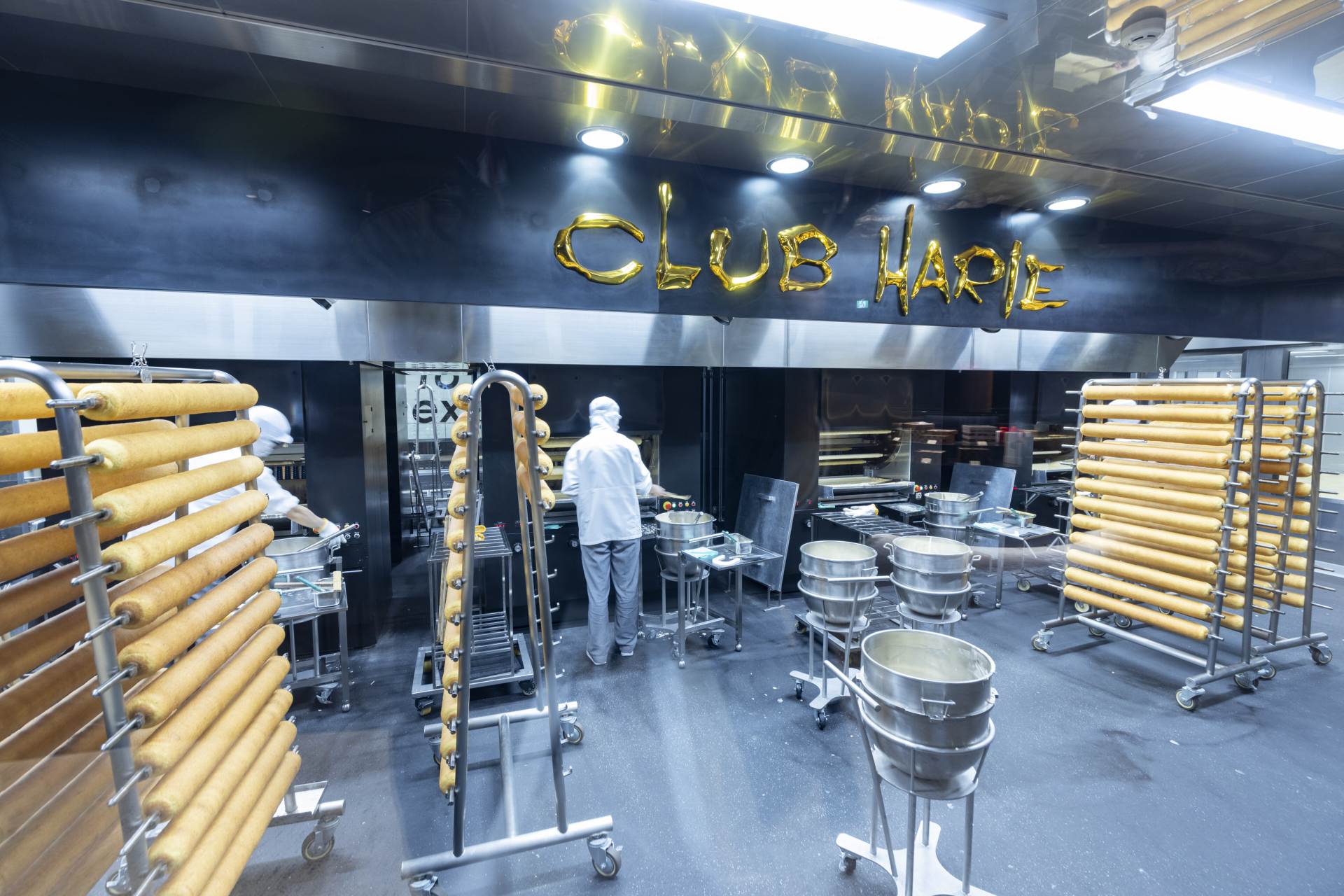
Racks of Baumkuchen spit cake at La Collina Omihachiman.
With decor ranging from indoor forests to expansive garages, buying German-style Baumkuchen spit cake or traditional Japanese “castella” has never felt so… whimsical. This enchanting place provided a fittingly delightful conclusion to our journey.
